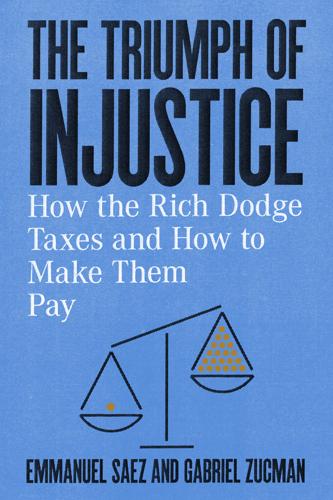
The Triumph of Injustice: How the Rich Dodge Taxes and How to Make Them Pay
by
Emmanuel Saez
and
Gabriel Zucman
Published 14 Oct 2019
Four polls carried out by ABC and Gallup in late 1986 showed that public support for the Tax Reform Act of 1986 was at best tepid with approval rates between 22% and 40% and a large fraction of the public not having a view. Approval/disapproval/don’t know percentages stand at 22/15/63, 22/15/63, 38/36/26, 40/34/26 for each of the four polls (Kertcher, 2017). 2. Crystal (1992) shows that executive compensation soared after the Tax Reform Act of 1986. Hubmer, Krusell, and Smith (2016) find that the Tax Reform Act of 1986 has played a key role in the rise of US wealth concentration. See also Piketty, Saez, and Zucman (2018). 3.
…
According to both Reagan and the Democrats who championed the bill, lawmakers had had no choice. The income tax was a terrible mess and abuse was rampant. Given this state of affairs, all government could do was slash the rates while plugging loopholes to make up for the lost tax revenue. The Tax Reform Act of 1986 illustrates how progressive taxation dies. It does not die democratically, struck down by the will of voters. Looking at most of the great retreats of progressive taxation, we find the same pattern: first, an outburst of tax dodging; then, governments lamenting that taxing the rich has become impossible and slashing their rates.
…
For the majority of the nation’s political, economic, and intellectual elites, slashing the corporate tax rate was the right thing to do. During his presidency, Barack Obama had advocated in favor of reducing it to 28%, with a lower rate of 25% for manufacturers. Trump’s reform did not garner the same bipartisan fervor as Reagan’s Tax Reform Act of 1986: Democratic lawmakers considered 21% too low a rate, objected to the changes the bill made to individual income taxes, and did not vote for it. But most lawmakers agreed that lower corporate tax rates were in order. In holding that opinion, they were in line with most policymakers in rich countries.
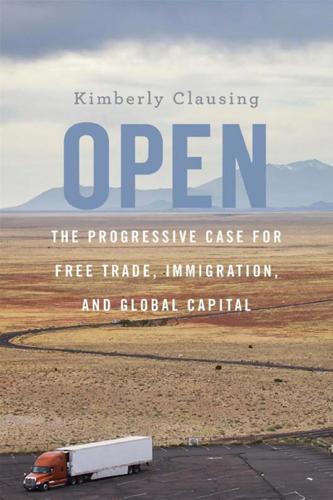
Open: The Progressive Case for Free Trade, Immigration, and Global Capital
by
Kimberly Clausing
Published 4 Mar 2019
That said, moving a true tax reform through the halls of Congress will be difficult. Still, there is some precedent for comprehensive tax reform in the Tax Reform Act of 1986. The passage of this reform was a feat so amazing that it was chronicled in a gripping book: Showdown at Gucci Gulch.20 Within, there are lessons for today in terms of framing, agenda setting, and the importance of persistent leadership, as discussed in the related text box. Gucci Gulch The passage of the Tax Reform Act of 1986 was a golden moment in the history of American taxation. The hard-won victories of the legislation, chronicled in the Showdown at Gucci Gulch, were shocking, unlikely, and all-too-impermanent … rather like the fleeting joy of a perfectly completed return.
…
Buffett’s response is a verbal eye-roll: “I have worked with investors for 60 years and have yet to see anyone … shy away from a sensible investment because of the tax rate on the potential gain.”1 The plan is popular with the American public. A CNN survey about the Buffett-inspired legislation found 72 percent of respondents in favor of its adoption. ________________________ 1. Warren E. Buffett, “Stop Coddling the Super-Rich,” New York Times, August 14, 2011. Following the Tax Reform Act of 1986, capital and labor income were taxed uniformly, at the same top rate. Lighter taxation of capital income is difficult to justify. For example, capital income is much more concentrated in the hands of the rich than labor income; the top 5 percent of taxpayers earn 37 percent of all income (including both labor and capital), but a whopping 68 percent of dividend income and 87 percent of long-term capital gains income.3 Also, there is little efficiency rationale for lighter tax burdens on capital income.
…
The hard-won victories of the legislation, chronicled in the Showdown at Gucci Gulch, were shocking, unlikely, and all-too-impermanent … rather like the fleeting joy of a perfectly completed return. The Tax Reform Act of 1986 derived its battle name from the pricey ensembles sported by the crowds of lobbyists that lined the halls outside the committee hearing room. The high costs of their suits and shoes were miniscule in comparison with the amount of money under the scope of the legislation: the Tax Reform Act cut the top individual tax rate from 50 percent to 28 percent, closed loopholes valued at $100 billion, subjected labor and capital to the same tax rates, and slashed the tax burdens of the poorest Americans, all during the presidency of the famously tax-hating Ronald Reagan.
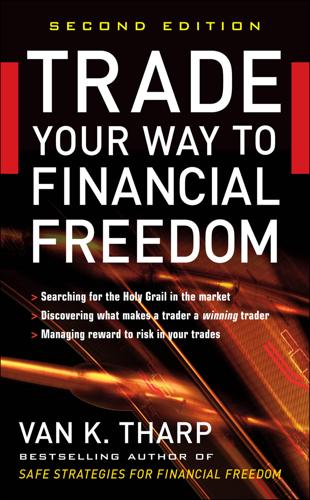
Trade Your Way to Financial Freedom
by
van K. Tharp
Published 1 Jan 1998
You can then decide for yourself how much you want to keep up with them in the future. Tax Reform Act of 1986: Wiping Out Many Real Estate Investments and the Boating Industry When Ronald Reagan tackled tax reform in the 1980s, he dramatically lowered the top tax rates, which, in my opinion, helped to greatly stimulate the economy. However, he also closed many loopholes. Many real estate partnerships, for example, sprang up in the 1980s in order to take advantage of significant loopholes in the tax law. But when those loopholes were closed by the Tax Reform Act of 1986, those partnerships basically went out of business. The net result was a record number of bankruptcies for people involved in those loopholes.
…
• What will be the effects of proposed legislation on my markets and my strategies? • What’s being proposed, and could it totally ruin my strategy or market? • Is there any way I can take advantage of these changes? And last, you need to anticipate things that could change. For example, many of the real estate strategies that were ruined by the Tax Reform Act of 1986 were taking losing real estate deals and making them profitable to investors just because of the tax implications. You can probably state as a rule of thumb that if something costs you money and is worth doing only because of the tax implications, then it is probably a very dangerous strategy
…
R., 79 on band trading, 110–116 Basis trading, 127 Basso, Tom, 35, 77, 253 on objectives, 50–59 on trend following, 98–102 Bearish patterns, entry based on, 263 Bear market, 163–168 Beliefs, 71–72, 452 Bernanke, Ben, 161–162 Beyond Technical Analysis (Chande), 74 Biases: of gambler’s fallacy, 41–42 of not giving yourself enough protection, 39–40 (See also Judgmental heuristics) Big-picture scenarios, 153–186 author’s vision of big picture and, 156–157 changes in rules, regulations, and taxes and, 176–180 globalization and, 168–172 global warming and, 182 health crisis and, 183 human inefficiency and, 180–182 monitoring, 183–185 mutual funds and, 172–176 secular bear market and, 163–168 trade wars and, 183 U.S. debt and, 157–163 wars and, 182–183 Blue Chip Growth, 398 Boating industry, Tax Reform Act of 1986 and, 177 Boeing, 159 Bollinger, John, 112–113 Bollinger Bands, 113 Bottom patterns, entry based on, 263 Branscomb, Chuck, 28–29 Brinson, Gary, 406 Broker commissions, 391 Buffett, Warren, 108, 196, 237 value model of, 240–242, 280, 304–305, 321–322, 430–431 Buffett: The Making of an American Capitalist (Lowenstein), 240 Bullish patterns, entry based on, 263 Business evaluation model, 240–242 entries in, 280 exits in, 321–322 position sizing in, 430–431 stops in, 304–305 Business fundamentals, setups and, 237 Butterfly spreads, 127 Calendar spreads, 125 Campaign trading, 294 Campaign Trading (Sweeney), 288 Campbell, Joseph, 7, 8 Candlestick charts, 22–23, 24 entry based on, 263–264 CANSLIM trend-following model, 238–240 entries in, 279–280 exits in, 321 position sizing in, 430 stops in, 303–304 Capital, amount needed to live on, 50–51 Capitalization, market selection and, 223 Cash-and-carry strategy, 128 Chande, Tushar, 74, 273 Channel breakouts: as entries, 255–262 as stops, 301, 302 trailing stops and, 313 Channels, 112 Charts, 23 bar, 23–26 candlestick, 22–23, 24, 263–264 entry based on patterns in, 263–264 representativeness bias and, 23–26 trailing stops based on patterns in, 313 visual entry based on, 262–263 Climate change, 182 Climax setups, 230–231 Colby, Robert W., 271 Commissions, 391 Commodities: intercontract spreading and, 127–128 prices of, growth of emerging economies and, 169–170 Commodity trading advisors (CTAs), 49 Component data, setups and, 235 Computer Analysis of the Futures Market (LeBeau and Lucas), 74, 85, 102 Concepts, 97–151 arbitrage, 79–80, 129–136 band trading, 78–79, 110–116 fundamental analysis, 102–107 intermarket analysis, 136–142 market orderliness, 142–148 seasonal tendencies, 81, 117–124 spreading, 80–81, 124–129 for trading system development, 76–81 trend following, 98–102 value trading, 79, 107–110 Connors, Laurence A., 227, 231 Consensus, 104 Conservatism bias, 34 Conservative-with-profits-and-risky-with-losses bias, 42–43 Consolidations, trailing stops based on, 313 Consumer debt, of United States, 159–160 Continuation patterns, entry based on, 263 Contradictory evidence, failure to recognize, 34 Corporate debt, of United States, 159 Cost-of-trading opportunity, 390–394 CPR model for risk, 422–423 Crittenden, Eric, 257 Currency cross rates, 127 Cycles, components of, 118 Daily Graphs, 238 Day trading, regulations affecting, 178 Deceleration, entry signals and, 276–279 The Definitive Guide to Expectancy and Position Sizing (Tharp), 15 Degrees-of-freedom bias, 38–39 Derman, David, 108 Dev-stops, 301 Diligence, 398–399, 402 Directional movement, 267–270 Discipline, 448–450 Discretionary stops, 303 Displaced moving averages, 273 Distorting information, 21 (See also Judgmental heuristics) Distribution of trades, 209–212 Dollar (see U.S. dollar) Dollar stops, 299–300 Dollar trailing stop, 312–313 Donchian channels, 112 Double-blind tests, 33–34 Dynamic bands, 112–113 Easterling, Ed, 165, 167–168 Elliott Wave theory, 142–143, 217–218, 223–224 Emerging countries, growth of, 169 Encyclopedia of Technical Market Indicators (Colby and Meyers), 271 The End of Our Century (Masson), 145 Entry phases, 219–226 determining if conditions are appropriate for use of system, 219–220 market direction, 224–225 market timing, 226 selection of markets to trade, 220–224 setup conditions, 225–226 Entry signals, 251–285 channel breakouts, 255–262 designing, 275–279 directional movement and average directional movement, 267–270 evaluation of, 279–284 high-R-multiple winners and, 252 moving averages and adaptive moving averages, 271–274 oscillators and stochastics, 274–275 patterns, 263–264 prediction techniques, 264–265 reliability of trading systems and, 251–252 sense of control with, 31–32 trying to beat random entry and, 253–255 visual entry based on charts, 262–263 volatility breakouts, 265–267 Entry testing, 86 Envelopes, 112 Equal value units model, for position sizing, 419–421 The Essays of Warren Buffett (Buffett), 240 Evaluating trading systems, 90–91, 385–404 cost-of-trading opportunity and, 390–394 expectancy and, 386–390 newsletter recommendations and sample systems and, 397–403 opportunity and, 388–390 peak drawdowns and, 394–397 EWY, comparison of approaches and, 348–353, 372–374 Exchange-traded funds (ETFs), 222 Excursion, 294–297 Execution costs, 391–392 Exhaustion pattern setups, 230–231 Exits (see Profit-taking exits) Expectancy, 89, 196–200 opportunity and, 388–390 positive, systems with, 386–388 Exponential moving averages, 273 Extreme Value, 399, 402 Failed-test setups, 227–230 Fibonacci numbers, 147 Filters, setups versus, 232–237 Financial freedom, as goal, 16 Fundamental analysis: employing successfully, 104–107 limitations of, 104 setups and, 218–219, 234 Fundamental Analysis (Schwager), 74 Fundamental trading method: entries in, 282–283 exits in, 323 of Gallacher, 245–246 position sizing in, 432–434 stops in, 305–306 Futures markets: exits in, 322–324 position sizing in, 431–434 setups in, 243–248 stops in, 305–306 Gabellio, Mario, 108 Gallacher, William, 243, 432 fundamental trading method of, 245–246, 282–283, 305–306, 323, 432–434 Gambler’s fallacy, bias of, 41–42 Game, 452 Gann, W.
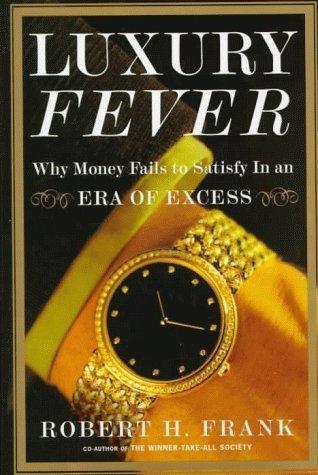
Luxury Fever: Why Money Fails to Satisfy in an Era of Excess
by
Robert H. Frank
Published 15 Jan 1999
“It’s Brand Over Bargain in the World of Cigars,” New York Times, March 1, 1997: Business sec., 4. Sjostrom, Joseph. “Projects’ Delays Add to Expense Down Road; Stalled Projects Just Speed Deterioration of Crumbling Highways,” Chicago Tribune, July 31, 1997: MC1. Slemrod, Joel. “The Economic Impact of the Tax Reform Act of 1986,” in Do Taxes Matter? The Impact of the Tax Reform Act of 1986, Joel Slemrod, Cambridge: MIT Press, 1990: 1-12. Smith, Adam. An Inquiry into the Nature and Causes of the Wealth of Nations, Chicago: Encyclopedia Britannica, 11952 (776). Smith, Bruce H. “Anxiety as a Cost of Commuting to Work,” Journal of Urban Economics 29, 1991: 260-66.
…
Several writers saw evidence for this claim when the reduction in top U.S. tax rates enacted in 1986 was followed by a large increase in the amount of income declared by top earners.4 No one can deny that the payoff from a dollar invested in tax avoidance is higher when tax rates are high than when they are low. But although the Tax Reform Act of 1986 cut top tax rates, it also broadened the tax base significantly by eliminating a large number of deductions and exemptions. If a rational tax avoider knows about a legal deduction or exemption, she will almost surely claim it whether her tax rate is 40 percent or 60 percent. She may spend a little more effort searching out exemptions when the tax rate is higher, but her tax consultant is unlikely to advise her differently in the two cases.
…
The Social Psychology of Leisure, New York: Penguin, 1996. Associated Press. “Americans Are Spending More on Cars,” Chicago Tribune, March 15, 1998: CN3. Associated Press. “Good Cigars Grow Hot,” Cincinnati Post, February 27, 1997: 6B. Auerbach, Alan, and Joel Slemrod . “The Economic Effects of the Tax Reform Act of 1986,” Journal of Economic Literature XXXV, June 1997: 589-632. Babcock, Linda; X. Wong; and George Loewenstein . “Choosing the Wrong Pond,” Social Comparisons in Negotiations That Reflect a Self-Serving Bias,” Quarterly Journal of Economics 106, 1996: 3-19. Bagwell, Laurie Simon, and B.
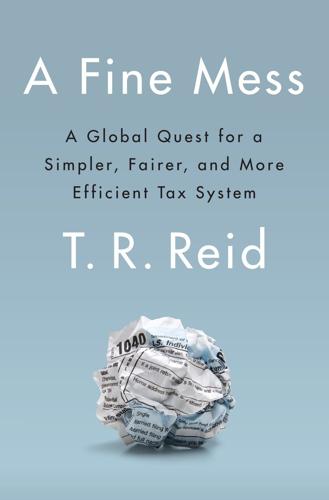
A Fine Mess
by
T. R. Reid
Published 13 Mar 2017
The fact is, we’ve done it before, in a time of severely divided government. In the mid-1980s, a strong conservative in the White House and a strongly liberal Speaker of the House—that is, Ronald Reagan and Tip O’Neill—reached agreement on the biggest transformation of the federal income tax since the tax was created in 1913. The Tax Reform Act of 1986, passed by a divided Congress and signed by a Republican president, was widely admired; it was precisely the kind of change that almost all tax experts favored. That reform was based on principles that have been adopted by countries around the world. If we go back to those fundamental principles, the United States could achieve serious tax reform, even in our current state of political gridlock.
…
Just as Bradley had predicted, the lure of sharply lower rates proved stronger than the senators’ attachment to their special interest tax breaks. With Ronald Reagan and the liberal Democrats pushing together, the drive for genuine tax reform gathered so much momentum that the BBLR bill—the Tax Reform Act of 1986—swept through both the Senate and the House and was signed into law by a beaming president in October. That 1986 law, generally recognized as “the most significant reform in the history of the income tax,”9 reduced the top marginal rate for individual taxpayers from 50% to 28%—the biggest reduction of any tax bill before or since.
…
See also specific taxes Tax Foundation, 148, 247 tax-free countries/states, 183, 191–95 tax-free items, 237, 251 tax-free savings, 9 tax justice, 45, 135 tax law, 50, 64, 68–69, 148–50 complexity of, 2, 5–7 first in U.S., 45–46 violations of, 158–59 writers of, 10, 112–13, 123, 209–13, 245, 252 Tax Law Design and Drafting (Thuronyi), 158 Tax Policy Center, 136, 184, 247 tax preferences, 54, 68 carried-interest, 137–39, 254 elimination of, 55–57, 66–67, 219, 251–52, 255 explanation of, 76–79, 250 in New Zealand, 59–60, 62 and tax complexity, 40–41, 48, 55, 225 See also specific types tax preparers, 6–7, 213, 215, 217, 219, 223–24, 252 tax rate inequality in, 70, 123, 254 top, 82–83, 85–86, 107, 160 top marginal, 17–18, 59–60, 67–70, 76, 124 See also broad base, low rates (BBLR); flat-rate income tax tax reform, 2, 61, 66–68, 91, 211–12 and BBLR, 56–58, 125, 218–19, 251–52, 255 fair type of, 95–96 of George W. Bush, 56, 88, 132 in New Zealand, 57–63, 65, 69, 251 of 1986, 10, 12, 85–86, 250–51, 254, 257 by rewriting code, 250–51, 255–57 in Slovakia, 107–8, 112–13 in U.S., 8, 12, 63–70, 73–74, 125, 241–48 and VAT, 229, 241–48, 255 Tax Reform Act of 1984, 64 Tax Reform Act of 1986, 12, 68–70, 85–86 tax revenue. See specific countries; specific taxes tax systems, 27, 53–54, 213, 221 best examples of, 57–63, 73, 106, 251 complexity of, 5, 9, 26, 40, 48, 55, 64, 68, 224, 229, 237, 257 cost of, 214–15, 238 efficiency of, 3, 241–42 fair, 3, 28, 46, 55, 111, 114, 125–26, 229, 237, 253 goals of, 36, 41, 44, 46 simplifying of, 2–3, 7, 56, 61, 79, 97–100, 105, 107, 256 successful, 2–3, 7–8, 28, 51–52, 126–27, 218, 251–52, 256 unified, 107–8, 228 Tea Party, 85 technological advances, 49, 105 terrorism, 187 Thuronyi, Victor, 158 timber, 34, 59–60, 80, 131, 164 Times (London), 119 “tiny tax,” 180–85 tobacco tax, 17, 21, 37–38, 40, 176 Tobin tax, 180–83 Tokyo, Japan, 7, 25, 30, 187 Toscana, David, 177 transfer tax, 130 Treasury I (tax reform), 65–66 Trump, Donald, 12, 98–100, 117, 138, 158, 166, 253–54 trusts, 6, 216 Tsipras, Alexis, 47 Turkey, 15, 20 Tyco International, 156 Uganda, 47 U.K.
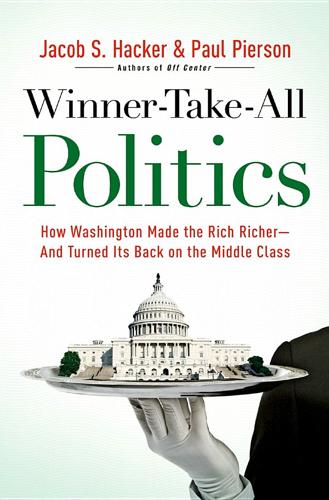
Winner-Take-All Politics: How Washington Made the Rich Richer-And Turned Its Back on the Middle Class
by
Paul Pierson
and
Jacob S. Hacker
Published 14 Sep 2010
Organized interests see the world the other way around. Elections are training camps; daily action in Washington is the regular season. Let’s pursue that tax reform example a little more. When pundits and columnists feel like singing a hymn to American government, one of their favorite examples is the Tax Reform Act of 1986. Two skilled reporters at the time dubbed this the “showdown at Gucci Gulch.”7 Gucci Gulch is the gauntlet of well-heeled lobbyists that lawmakers have to run in the corridors outside the House and Senate chambers where tax legislation gets written. Somehow, against all odds, the Erin Brockoviches won.
…
Voters, not special interests, seemed to come out ahead. Seemed to. Moving forward a few years, the story looks very different. If you take a good look at the tax code now, you’ll see that it is chock-full of new tax breaks, far more expensive than the ones eliminated with such fanfare. In hindsight, the venerated Tax Reform Act of 1986 resembles the ill-fated Roanoke colony in early Virginia. Like that colony, visitors returning to the act after a long absence would find it had vanished without a trace. In contrast to the mystery surrounding the settlers of Roanoke, however, we know what happened. The attention of voters and the press wandered elsewhere.
…
These groups came to play a key role in producing like-minded candidates—or at least candidates who faced strong incentives to behave as if they were like-minded—and in radicalizing tax politics. Two groups were at the heart of this effort: Grover Norquist’s Americans for Tax Reform (ATR) and Stephen Moore’s Club for Growth (CFG). ATR began as a Reagan White House operation, headed by Norquist, in the run-up to the (ironically, given ATR’s evolution, revenue-neutral) Tax Reform Act of 1986. The Club for Growth really started only in 1999 (although formally it succeeded a virtually moribund predecessor). Moore founded the organization with backing from conservative think tanks and media figures, as well as Wall Street financial interests. His previous training reads like an extended boot camp for extreme economic conservatism: work at the hard right Heritage Foundation and the libertarian Cato Institute, along with a stint on Dick Armey’s staff.
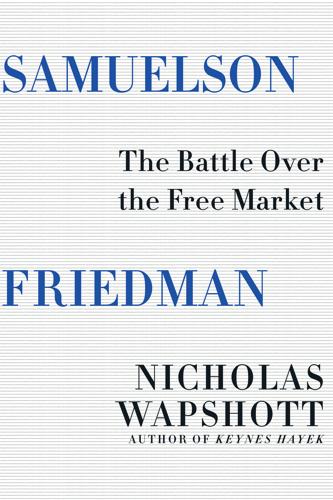
Samuelson Friedman: The Battle Over the Free Market
by
Nicholas Wapshott
Published 2 Aug 2021
Duke Samuelson archive. 33.He was finally awarded a PhD by Chicago in 1972. 34.Quoted in Eric Alterman, Sound and Fury: The Making of the Punditocracy (Cornell, Ithaca, N.Y., 1999), p. 171. 35.Samuelson, “Arthur Laffer: Here’s my account.” Duke Samuelson archive. 36.The Economic Recovery Tax Act of 1981 cut the highest personal income tax rate from 70 to 50 percent and the lowest from 14 to 11 percent and lowered the highest capital gains tax rate from 28 to 20 percent, while the Tax Reform Act of 1986 cut the highest personal income tax rate from 50 to 38.5 percent, then to 28 percent in the following years, while increasing the highest capital gains tax rate from 20 to 28 percent. 37.“A Simple Tax Reform,” Newsweek, August 18, 1980, p. 68. 38.Newsweek, September 24, 1973. 39.Newsweek, February 16, 1981. 40.
…
(Hank), 274, 275–76, 341 payroll withholding tax, 32–33 Pechman, Joseph, 207, 332 Pelosi, Nancy, 293 Pence, Mike, 293 Peterson, Pete, 145–46, 325 Phelps, Edmund, 114–15, 321 Phillips Curve, 111–12, 114–15, 121, 170, 178, 267, 298 Phillips, William, 111, 114, 321 Pigou, Arthur, 28–29, 38, 308 Pinochet, Augusto, 159–61, 168, 169, 170, 327 Poole, William, 213, 333 postwar consensus politics in Britain, 216, 232, 234, 236 Powell, Enoch, 237–38, 336 President’s Economic Policy Advisory Board (PEPAB), 201, 249 Prices and Production (Hayek), 38, 102 prime rate, Federal Reserve, 194–95 Principles and Rules in Modern Fiscal Policy (Samuelson), 20–21, 23 Profumo, John, 301 progressive income tax, 47 propensity to consume, 19, 100, 133 property rights, 80 Protest at Capitol, January 6, 2021, 293–94 Pure Theory of Capital, The (Hayek), 311 quantitative easing (QE), 263, 280–81, 324 quantity theory of money development by Chicago economists, 99–100 Friedman on, 45, 95, 98–100, 101–3, 104–5, 107 Keynes on, 63, 94, 96–97, 98, 106 Samuelson on, 99–100, 102, 125–26, 132–33 see also monetarism “Quantity Theory of Money, The” (Friedman), 98–99 Rand, Ayn, 81, 82, 260, 317, 338 “rational expectations,” 96, 115, 180–81, 278, 281 Reaganomics, 200–201, 249, 250, 251 Reagan, Ronald arms race with Soviet Union, 209–10, 215 deficit spending, 210, 333 Economic Recovery Tax Act of 1981, 333 education and early career, 199–200, 201 election in 1980, 199 federal bailouts backed by, 201 first inaugural address, 293 humor, 56 import quotas condoned by, 201 monetary policy, 201–2 opposition to communist tyranny, 209–10, 215, 216 Queen Elizabeth and, 230 Soviet Union collapse and, 214–15 supply-side economics, 204–6 tax cuts, 208, 209–10, 333 tax increases, 210 Tax Reform Act of 1986, 333 Volcker supported by, 202, 212 “Republican Revolution,” 251, 253 “Revealed Preference” theory, 163 “Right Approach to the Economy, The” (Joseph), 239 Road to Serfdom, The (Hayek), 35–36, 66–68, 87, 215, 222, 237, 334 Robbins, Lionel, 41, 306 Robertson, Dennis, 39, 41, 310 Robinson, Austin, 39 Robinson, (Edward) Austin, 41, 310 Robinson, Joan, 39, 40, 41, 310 Rockefeller, Nelson, 51, 138, 312 “Role of Monetary Targets in an Age of Inflation, The” (Volcker), 184–85 Romney, Mitt, 49, 311–12, 318 Roosevelt, Franklin D.
…
Bush tax cuts, 258–59 on government regulations, 158 on government spending, 78, 208–9 Hansen-Samuelson model, 14, 304 at Harvard, 15–17 on higher interest rates to control inflation, 122, 123 on hyperinflation, 121, 152 hypertension, 17, 284 impact of Newsweek debate with Friedman, 9, 53, 56 on improbability of another Depression, 277–78 on inflation during recovery, 279 on interest rate effects, 83 on intervention by government, 65, 87, 88–90 Joint Economic Committee of Congress hearing, 152–56 Kennedy and, 6, 21–24, 120, 138 on Keynesianism, 41 on laissez-faire system, 69–70, 77, 88, 221–22 Lawrence Summers and, 24, 267–68, 273–74, 294, 306–7, 340 legacy of, 294–95 limited effect of Fed’s actions, 135–36 on long-term deficits, 136 macroeconomics, 19, 84, 268, 277 on market forces, 82–83, 89 mathematical economics, 14, 16, 58, 61, 105, 161–62, 294 methodology used, 105 mockery of Friedman, 83–84, 87 monetary theory and, 20–21, 41, 101, 102, 125–27, 132–35 neoclassical synthesis, 20–21, 97, 281, 284, 287, 294 on Nixon’s hit list of enemies, 151–52, 326 Nobel Prize for economics, 161–64, 302, 328 note to Friedman in 1995, 254 PhD dissertation, 16, 162 Phillips Curve and, 114, 115 as a post-Keynesian, 41, 132, 134, 136, 323 price system seen as coercion, 80 on problem of inflation, 74, 118–22, 123, 176 on property rights, 80 on provoking man-made recession, 176, 191, 192–93, 194 on quantity theory of money, 99–100, 102, 125–26, 132–33, 171–73 on raising taxes to fight inflation, 123–24 reaction to Thatcher’s policies, 240 Red Scare and, 219–20 remedies for inflation, 122–25 “Revealed Preference” theory, 163 rivalry with Friedman, 10, 27, 34, 71, 83, 132, 295–96 role of individual in society, 90–91 similarities to Friedman, 11 snub by Harvard, 16–17, 282 social contract and, 81 socialism explained by, 217–19 Soviet economy and, 218–21 stagflation and, 118–20, 152, 282, 322 on supply-side economics, 205, 206–7 suspected of communist tendencies, 19–20 on taxation, 85–86 tax cuts recommended by, 23 and A Tract by Keynes, 97 traffic lights, 81, 87 tributes after death, 284–85 on unemployment, 15, 20, 23, 88, 120, 264 and University of Chicago (Chicago School), 13–14, 27–28, 33–34, 70, 82, 99–100, 254 on usefulness of theories, 61 view of Greenspan, 260–61 on Volcker’s Fed policies, 191, 192–93, 194, 196–97 on wage and price controls, 152, 154 on the welfare state, 80–81, 88, 173 World War II scientific work, 17–18 writing style of Newsweek columns, 10, 56–60 see also specific titles Say, Jean-Baptiste, 332 Say’s Law, 205 Schlesinger, Arthur Jr., 6, 302 Schultz, Henry, 28, 308 Schultz, Theodore, 82, 304 Schumpeter, Joseph, 15, 16, 282, 305 Schwartz, Anna death, 309 Krugman and, 322 Monetary History of the United States, 34, 44–45, 103–5, 134, 144, 262–63, 309 papers archived at Duke, 283 research, 34, 103–5, 107, 262, 280, 320 September 11, 2001, attacks, 255 Sherman Act, 90, 318 Sherman, Alfred, 233, 236, 239, 335–36 “shock treatment” in Chile, 160–61, 169, 327 Shoup, Carl, 32, 308 Shultz, George, 59, 144, 149, 151, 200, 201, 313–14 Simon, Norton, 3, 301 Simons, Henry, 14, 28, 82, 83, 99, 304 Skidelsky, Robert, 94, 319 Smith, Adam, 43, 90–91, 318 Smith, Richard M., 226 Socialism (von Mises), 62 Solidarity (Poland), 215, 334 Solow, Robert, 58, 60, 114, 282, 290, 313, 321 Solzhenitsyn, Alexander, 163 “sound money” policy in Britain, 234, 237–38, 240 Soviet Union arms race with U.S., 209–10, 215 black market, 219 collapse, 214–15, 252 economy of, 218–21 unreliable government data, 218, 334 Spencer, Herbert, 222, 335 Sraffa, Piero, 41, 102, 320 stagflation Friedman and, 119, 170–71, 207, 289, 322 Samuelson on, 118–20, 152, 282, 322 term origins, 322 Volcker and, 186, 202 see also inflation Stein, Herbert, 144, 157, 205–6, 325 sterling M3 (£M3), 231, 240, 244, 246, 247 Sternlight, Peter, 187–88 Stevenson, Adlai, 21, 306 Stigler, George Joseph Chicago School, 28, 82, 303, 304 Friedman and, 9, 34, 36, 171 Samuelson and, 20, 84 stimulus money, effects of, 100, 319 Structure of Scientific Revolutions, The (Kuhn), 94, 319 subprime loans, 273 Summers, Anita, 294, 343 Summers, Lawrence, 24, 267–68, 273–74, 294, 306–7, 340 Summers, Robert, 294, 306–7, 343 supply-side economics, 204–6, 207–8, 259, 332 Tarshis, Lorie, 19–20 Taussig, Frank, 29, 308 taxes cuts recommended by Keynes, 23 cuts recommended by Samuelson, 23 Friedman on, 32, 79, 85, 155–56, 208, 290 Friedman on tax cuts, 44, 155–56, 208, 209, 211, 252 inflation as hidden tax, 77–78 Laffer Curve and, 205, 206, 208, 209, 332 negative income tax plan, 143, 173, 292 payroll withholding tax, 32–33 progressive income tax, 47 Samuelson on, 85–86 Value Added Tax, 239 in wartime, 32, 309 Taxing to Prevent Inflation, 32 Tax Reform Act of 1986, 333 Tea Party, 288, 291, 293 Teller, Edward, 265, 339, 340 Thatcher, Margaret Centre for Policy Studies (CPS), 233 Conservative Party leadership, 216, 235–36 elected as prime minister in 1979, 227, 239 esteem for Friedman, 216, 240, 337, 338 firing of the “wets,” 244–45 interest in ideas for their own sake, 238–39 monetarism, 216, 237–39, 240, 243–44, 246, 247 see also British monetarism Theory and Measurement of Demand, The (Schultz), 28 Theory of the Consumption Function, A (Friedman), 29, 44, 100, 103 Thorneycroft, Peter, 237, 336 Thurow, Lester, 226, 335 Time magazine, 3–4, 74–76 Time on the Cross: The Economics of American Negro Slavery (Fogel and Engerman), 224 Titanic sinking, 2 Tobin, James, 102, 320, 323 Tract on Monetary Reform, A (Keynes), 78, 94–97, 106, 109, 129 traffic lights, 81, 87 trickle-down economics, 210 Troubled Asset Relief Program (TARP), 276, 278 Truman, Harry S., 5, 306 Trump, Donald J., 291–92, 333, 342 unemployment after financial freeze, 278–79 in Britain after World War I, 40, 63, 234 COVID-19 pandemic, 342 Federal Reserve mandate, 108, 178 financial freeze of 2007–8, 278–79 Friedman on, 110–11, 304–5 Hayek on, 199 Joseph on, 234–35 Keynes on, 15, 64, 234–35 “natural rate” of, 110–11, 114–15 rates in U.S., 1975–1980, 175 Samuelson on, 15, 20, 23, 88, 120, 264 universal basic income, 292 Value Added Tax, 239 Veblen, Thorstein, 164, 328 velocity of money Friedman on, 61, 93–94, 106, 109 Keynes on, 63, 94, 97, 98 Samuelson on, 172 Volcker on, 185, 212 Vietnam War draft dodgers, 49 Galbraith and, 7, 312 and inflation, 121, 145 Johnson and, 7, 52 Vincent Astor Foundation, 3, 4 Viner, Jacob, 14, 28, 33, 99, 304 Volcker, Paul about, 177, 329 AEA address, 181 appointment as Fed chairman, 177–78, 186 at Camp David summit, 148 Carter’s reaction to Fed policies, 191 consumer credit controls, 192 on Friedman’s computer algorithm idea, 200 interest rates under, 181, 186–87, 188, 190–92, 194–95, 199, 212 monetarism abandoned by, 212, 246 monetary policy to fight inflation, 186–92, 194–95, 202–4 monetary targets, 181, 182–83, 184–86, 188–89, 192–93, 195–96 Reagan support for, 202, 212 recession provoked by, 191–92, 193, 194, 195–96, 202, 211–12 skepticism about monetarism, 178–80, 181–85, 189, 235 stagflation and, 186, 202 on velocity of money, 185, 212 wage and price controls, 149 Volker Foundation, 45, 66 von Mises, Ludwig, 36, 37, 62, 73–74, 163, 172, 309 wage and price controls controls in U.S., 149–51, 152, 154–55, 156–57, 326 incomes and pay policies in U.K., 228, 229, 232–33, 235 Wald, George, 169 Wałęsa, Lech, 215, 334 Wallace, George, 142 Wallich, Henry, 5, 7, 54, 302 Wallis, W.
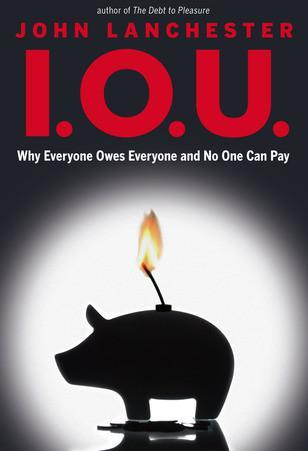
I.O.U.: Why Everyone Owes Everyone and No One Can Pay
by
John Lanchester
Published 14 Dec 2009
In 1980, the Depository Institutions Deregulation and Monetary Control Act, or DIDMCA, made it legal to charge higher rates and fees to some borrowers, which was the very definition of a subprime loan. In 1982, the Alternative Mortgage Transaction Parity Act, or AMPTA, made it legal to charge variable interest rates and arrange for “balloon payments” to catch up the unpaid balance at the end of a loan, and then the Tax Reform Act of 1986, or TRA, allowed the tax deduction of interest on mortgage loans, immediately and dramatically increasing their appeal as a form of debt. So a new category of lending already existed, conjured into being by changes in the law under administrations and congresses of both political flavors.
…
Morgan, 152 derivatives and, 64–71, 116, 120–21, 183 Exxon deal and, 67–68, 70, 121 Glass-Steagall Act and, 64–65 JPMorgan Chase, 190, 227 Julian, Harriette, 130–31 Kahneman, Daniel, 136–42, 193 Kerviel, Jérôme, 51 Keynes, John Maynard, 49n, 136 predictions of, 213–15 risk and, 55, 145 Kindleberger, Charles P., 104 King, Mervyn, 167, 178, 206 King’s Cross station, 88–90 Kreuger, Ivar, 105 Kynaston, David, 21, 23 leaderless group challenge, 139–40 Leeson, Nick, 51–52, 54 Lehman Brothers, 190, 204, 225 collapse of, 39, 75, 78 Leland, Hayne, 151 leverage: of banks, 35–36, 41–42, 70, 190 debt and, 60–61, 181, 190 deleveraging and, 41–42, 83 derivatives and, 51, 54–55 housing and, 60–61, 83, 95, 97 regulation and, 181, 186, 188, 190 risk and, 35–36 Li, David X., 115–17, 157–58 liabilities, 31–35 in balance sheets, 25–28, 31–34, 37 of banks, 25, 32–35, 37, 41, 204 of individuals, 27–28, 35 leverage and, 35, 41, 60 libel law, 93 life expectancies, 17, 213 liquidity, 212 housing and, 28–29, 90, 96–97 investments and, 60–61 Lloyds TSB, 36, 38–40 loans, lending, 74–76, 108–9 in balance sheets, 27, 30, 34 of banks, 22, 24, 27, 33–36, 41–42, 58–60, 67, 69–70, 74, 83–84, 91–94, 102, 117, 127, 129–30, 143, 146, 165, 187, 216–17, 229 credit and, 209, 216–17 derivatives and, 50–51, 55, 66–75, 80, 121–22 Exxon deal and, 67–68 interest rates and, 59–60, 66, 74, 102, 108, 145, 172–73 paying the bill and, 220–21 predatory, 122, 127–32 risk and, 66–67, 69–72, 74–75, 80, 95, 117, 145, 174 securitization in, 69, 74 see also mortgages London, 53, 84 housing in, 88–90 see also City of London Long-Term Capital Management (LTCM): collapse of, 142, 162, 164–65, 230–31 derivatives and, 54–56, 80 loss aversion, 137 Lovelock, James, 231 Lowenstein, Roger, 161 Macmillan, Harold, 216 Madoff, Bernard, 105, 171, 191–92, 195 Mailer, Norman, 172 Manias, Panics, and Crashes (Kindleberger), 104 manufacturing, 4, 13, 58, 109, 229 and financial vs. industrial interests, 197, 199 Marxist analysis of, 15–16 stocks and, 148–49 market discipline, 183–84 Markopolos, Harry, 192 Markowitz, Harry, 147–49, 158 mark to market, 42, 105–6 Marx, Karl, 15–16 Maryland, housing in, 125–31 Masters, Blythe, 68, 121 mathematics, 5, 231 derivatives and, 47–48, 52–54, 115–17, 166 risk and, 46, 55–56, 74, 133, 136, 146–50, 154, 158, 160–67, 202 of share pricing, 147–48 Meriwether, John, 54 Merrill Lynch, 39, 77, 120, 190, 227 Merton, Robert, 54–55 microeconomics, 137 Minsky, Hyman, 104 Monetary Policy Committee, 178–79 money: assumptions based on primacy of, 202–4 cost of, 102–3 flows of, 7–9, 26 inconceivable amounts of, 8 Money Machine, The (Coggan), 25 Moody’s Investors Service, 62, 70, 114, 119, 208, 210 Morgan, John Pierpont, 20, 64 Morgan Stanley, 40, 64, 227 Morris, Charles, 42 mortgages, 38–40, 83–87, 89–95, 97–102, 110–32 in balance sheets, 27–28 balloon payments on, 100 and buy-to-let properties, 177 conforming, 112, 124 credit ratings and, 123–24, 126 of Cutter family, 126–27 defaults on, 159–60, 163, 165, 229 derivatives and, 38, 57–58, 75–76, 112–22, 132, 157–60, 172, 210–12 discriminatory practices and, 99–101, 127 durations of, 95 endowment, 86–87, 89–90, 146 Iceland’s economic crisis and, 10–11 interest and, 8, 58, 86, 89, 91–92, 95, 100, 102, 108, 110, 112–14, 122, 128, 145–46, 174, 176, 212 “liar,” 126, 132 “no doc,” 132 No Income, No Job or Assets (NINJA), 126 piggyback, 132 predatory lending and, 122, 127–32 regulation and, 99–100, 185 risk and, 145, 158–60, 163–65 sizes of, 92–94 subprime, 38, 75, 83, 100, 113–19, 122–25, 127, 132, 157–59, 165, 202, 210 see also houses, housing, home ownership Nasdaq, 104 nationalization, 24, 39–40, 228–30 New York Times, The, 77, 98, 208 “Night in Tunisia, A,” 45 Nikkei 225, 51–52, 54 9/11 terrorist attacks, 2, 107 Northern Rock, 5, 39, 94, 194, 206 Obama, Barack, 77, 205 regulation and, 188, 190, 223–24 Objectivism, 142–43, 173 oil, 3–4, 107–8, 148–49 “On Default Correlation” (Li), 116 options, 50–52, 151, 174, 184 how they work, 46–47, 50–51 Osaka exchange, 54 Pacioli, Luca, 26 panic of 1893, 64 panic of 1907, 20, 64 Parker, Charlie, 45 Paulos, John Allen, 8 pensions, 76–77, 165, 204 in balance sheets, 27–28, 31 Phillips, Julia, 199 politics, politicians, 5–6, 19–21, 23–25, 81, 118–19, 169–70, 176–78, 217–26, 228–32 AIG bailout and, 76–78 banks and, 25, 33, 43, 182, 186, 195, 202, 207, 211, 217, 228–31 bonds and, 29–30, 61–62, 103, 109, 118, 144, 176–77, 208–9 derivatives and, 57, 183–86 financial industry’s ascent and, 19–20 free-market capitalism and, 14–15, 19, 21, 23–24 housing and, 87–89, 91, 96–101, 177–78 Iceland’s economic crisis and, 9–10, 12, 24, 223 interest rates and, 102–3, 107–8, 172–80, 221 paying the bill and, 219–23 regulation and, 15, 19–21, 24, 169, 180–92, 195, 199, 201, 223–26 risk and, 142–43, 164–66, 174, 184 Ponzi, Charles, 105 Ponzi schemes, 191–92 poor, poverty, 3–4, 13, 21, 82, 179, 196 housing and, 100, 113, 118, 121–23, 126–27, 130–31, 163 pork bellies, 48–49 portfolio insurance, 151–52, 162 “Portfolio Selection” (Markowitz), 147 Posner, Richard A., 120, 174, 182, 193 Powell, Anthony, 62 price, prices, 105–11, 203 and banking-and-credit crisis, 216–18, 220 bonds and, 61, 63, 102–3, 108–10, 144 derivatives and, 38, 46–52, 54, 56, 75, 158–59, 166 of houses, 5, 28–29, 37–38, 61, 71, 86–91, 101, 109–11, 113, 115, 125, 157, 160, 164–66, 173–76, 194, 208 of oil, 3–4, 107–8, 148–49 risk and, 145–50, 158–59, 164–66 of stocks, 102, 105–6, 109–10, 147–51, 158, 174 of toxic assets, 37–38, 42 volatility of, 47–48, 148–50 “Pricing of Options and Corporate Liabilities, The” (Black and Scholes), 45, 47–48, 147 probabilities, 46, 55, 74, 115, 141, 145, 153–55, 160–63 profits, 20, 28, 104–6, 110, 192, 226–28, 230 banks and, 33, 35, 67, 78, 227–28 and benefits of debt, 59–60 derivatives and, 50, 54, 57, 63, 65, 106, 114, 121–22 Enron and, 105–6 regulation and, 204, 226 risk and, 150, 226 Protection of Homeowners in Foreclosure Act, 131 “Quiet Coup, The” (Johnson), 19–20, 185–86 Ragtime (Doctorow), 64 Rand, Ayn, 142–43, 173 Reagan, Ronald, 14, 19–20, 24, 142, 185 recessions, 42, 89, 94, 142, 171, 175, 219 regulation, deregulation, 15, 19–22, 24, 169, 180–202 banking and, 21, 33, 180–91, 194–96, 199–200, 202, 204–5, 208, 211, 223–27 bond ratings and, 208–9 derivatives and, 68, 70, 73, 153, 183–86, 200–201 framework and regime of, 189–92 market discipline and, 183–84 mortgages and, 99–100, 185 proposals for, 223–26 risk and, 143, 153, 164, 187–88, 191, 195, 202, 204–5, 212, 224, 226 in U.K., 21–22, 105n, 180–82, 194–96, 199–201, 218 in U.S., 181, 184–92, 195, 199–200, 223–24, 227 Reykjavík, 10, 12, 170 risk, risks, 49–58, 66–76, 133–36, 141–67, 211–12, 219 AIG and, 75–76 assessment of, 46, 55–56, 74, 133, 135–36, 141–43, 145–67, 187–88, 191, 202, 205, 212, 216, 226 banks and, 19, 34–37, 41, 133, 135–36, 143, 150–54, 156–57, 160, 165–66, 174, 187–88, 191–95, 202, 204–7, 216, 224, 226, 228, 230 bonds and, 61–63, 103, 118, 144, 154, 208 derivatives and, 46–47, 49–52, 54–55, 57–58, 66–75, 78–80, 114–15, 117–22, 151, 153, 158–60, 163, 166–67, 184–85, 205, 212 desirability of, 144, 146, 150, 206–7 diversification and, 146–48 Greenspan and, 142–43, 164–66, 174, 184 hedging of, 49–50, 52, 58, 115, 205 historical data and, 163, 166 housing and, 88, 94–97, 112–13, 125, 129, 145, 158–60, 163–65 investing and, 5, 68, 70, 88, 103, 144, 146–53, 158, 165, 184, 190 leverage and, 35–36 LTCM and, 55–56 overconcentration of, 72–73 regulation and, 143, 153, 164, 187–88, 191, 195, 202, 204–5, 212, 224, 226 securitization and, 69–70, 163, 165 of stairs, 134–35 VAR and, 151–57, 162–63 risk-adjusted return on capital (RAROC), 150–51 Ritholtz, Barry, 219–20 Robinson, Phillip, 128–31 Rogers, Jim, 221 Royal Bank of Scotland (RBS), 34–36, 120, 227 bailout of, 32, 40, 204 Russia, 3, 15–16, 18, 53 bond default of, 55–56, 162, 164–65 Salomon Brothers, 63 Sanford, Charles, 150 Santander, 40 savings, 28, 86, 107, 177, 179, 187 savings and loan crisis, 73, 185, 220 Scholes, Myron, 45, 47–48, 54–55, 147 Securities and Exchange Commission (SEC), 195 credit ratings and, 209–10 regulation and, 153, 186, 189–92 securitization, 20, 22, 200 derivatives and, 69–70, 74, 113–14, 117–19, 122, 212 risk and, 69–70, 125, 163, 165, 212, 224 selling, sales, 34, 42, 104, 174, 203 of bonds, 59, 61–63, 144 derivatives and, 46–50, 52, 56, 65, 67–68, 73–74, 120 of equity, 58–59 of houses, 28–29, 71, 89–90 risk and, 151–52, 165, 224 Shiller, Robert, 106, 145n, 194 Simon, David, 83–84 Singapore exchange, 54 Skilling, Jeffrey, 106 small numbers, law of, 137 Sociét Générale, 51, 77 solvency, insolvency, 28–29 of banks, 36–38, 40–43, 64, 74–75, 120 Spain, 15, 40, 177, 214 contracting economy of, 222–23 housing in, 92, 110 special purpose vehicles (SPVs), 70, 120 stairs, deaths caused by, 134–35 Standard & Poor’s (S&P), 62, 114, 151, 209 statistics, 160–62 Stefánsdóttir, Rakel, 9–10, 12 stock market, stocks, 22, 54–55, 61, 76, 80, 101–11, 115, 226 bubbles and implosions in, 3, 42, 103–9, 142, 175–76 derivatives and, 50–52, 54 investing in, 59, 73, 101–7, 111, 146–52, 158, 175, 192 new-economy, 103 1929 crash of, 152, 199, 213 October 1987 crash of, 142, 151–52, 161–62, 164–65 prices of, 102, 105–6, 109–10, 147–51, 158, 174 structured investment vehicles (SIVs), 120 Summa de Arithmetica (Pacioli), 26 Summers, Lawrence, 43, 74, 188 Taleb, Nassim, 53, 155–56 Tax Reform Act of 1986 (TRA), 100 technology, 42, 104, 149, 155, 166 terrorism, 2, 12, 18, 107 Tett, Gillian, 121, 193 Thatcher, Margaret, 199, 217, 222 free-market capitalism and, 14, 21, 24 on housing, 87, 91, 98 regulation and, 21, 195–96 torture, end of ban on, 18 tranching, 117–18, 122 Treasury, British, 181–82 Treasury, U.S., 43, 54, 64, 74, 76–78 AIG bailout and, 76, 78 regulation and, 188–90 Treasury bills (T-bills), 29–30, 62, 103, 118, 144, 208 China’s investment in, 109, 176–77 Trichet, Jean-Claude, 92 Trillion Dollar Meltdown, The (Morris), 42 Troubled Assets Relief Program (TARP), 37, 189 Turner, Adair, 181 Tversky, Amos, 136–38, 141 UBS, 36, 120 uncertainty, 96 fair value theory and, 147–48 risk and, 55–56, 153, 163 United Kingdom, 9, 11–12, 18, 28–29, 61, 122–24, 134, 139, 194–202, 216–18 banking in, 5, 11, 32–36, 38–40, 51–54, 76–77, 89, 94, 120, 146, 180, 194–96, 199, 202, 204–6, 211–12, 217, 227–28 bill of, 220–22, 224 and City of London, 21–22, 32, 195–97, 200, 217–18 credit ratings and, 123–24, 209 derivatives and, 72, 200–201 financial vs. industrial interests in, 196–99 free-market capitalism in, 14–15, 21, 230 GDP of, 32, 214, 220 Goodwin’s pension and, 76–77 housing in, 38, 87–98, 110, 122, 177–78 interest rates in, 102, 177–80 personal debt in, 221–22 prosperity of, 214, 216 regulation in, 21–22, 105n, 180–82, 194–96, 199–201, 218 United Nations, 4 United States, 17–22, 34, 62–71, 120–31, 134n, 165, 199–201 AIG bailout and, 76–78 banks of, 36–37, 39–40, 43, 63–71, 73, 75, 77–78, 84, 116, 120–21, 127, 150, 152, 163, 183, 185, 190, 195, 204, 211–12, 219–20, 225, 227–28 bill of, 219–20 China’s investment in, 109, 176–77 credit and, 109, 123–24, 195, 208–9, 211 free-market capitalism in, 14–15, 230 housing in, 37, 82–86, 95, 97–101, 109–10, 114–15, 122, 125–31, 157–58, 163 interest rates in, 102, 107–8, 173–77 regulation in, 181, 184–92, 195, 199–200, 223–24, 227 urban desolation in, 81–86 value, values, 42, 74–75, 78–80, 103–4, 179, 181, 217–18, 220, 227 bonds and, 61, 103 derivatives and, 38, 48–49, 185, 201 housing and, 28–29, 71, 90, 92–95, 111, 176 investing and, 60–61, 104, 198 LTCM and, 55–56 notional, 38, 48–49, 80 value at risk (VAR), 151–57, 162–63 Vietnam War, 18, 220 Viniar, David, 163 volatility, 20, 158 risk and, 47–48, 148–50, 161 Volcker, Paul, 20 Waldrow, Mary, 127 Wall Street, 22, 53, 64, 129, 188 Washington Post, The, 18 wealth, 4, 10, 19–21, 64, 204, 206 financial industry’s ascent and, 20–21 in free-market capitalism, 15, 19, 230 housing and, 87, 90, 121 Keynes’s predictions on, 214–15 in West, 218–19 Weatherstone, Dennis, 152 Wells Fargo, 84, 127 Wessex Water, 105n West, 14–18, 43, 213, 231 conflict between Communist bloc and, 16–18 free-market capitalism in, 14–15, 17, 21, 23 wealth in, 218–19 wheat, 49n, 52 When Genius Failed (Lowenstein), 161 Williams, John Burr, 147 Wilson, Lashawn, 130–31 Wire, The, 83–84 World Bank, 58, 65, 69 * GDP, which will be mentioned quite a few times in this story, sounds complicated but isn’t: it’s nothing more than the value of all the goods and services produced in an economy.
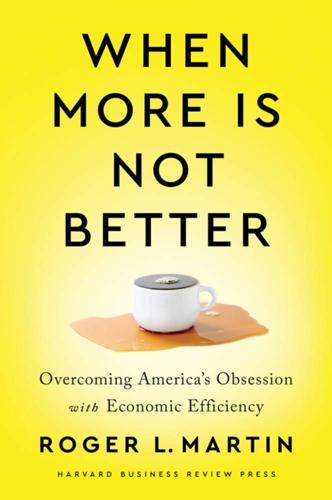
When More Is Not Better: Overcoming America's Obsession With Economic Efficiency
by
Roger L. Martin
Published 28 Sep 2020
Yet despite this economic success, the view emerged that the high marginal tax rates for the highest-earning Americans discouraged their work effort and hurt American growth. This led to the Economic Recovery Tax Act of 1981, which—among other measures—cut the top marginal personal-income-tax rate from 70 percent to 50 percent. That was followed by the Tax Reform Act of 1986, which cut the top rate to 28 percent, roughly a level last seen in 1931. It is easy to see these two acts as the doings of a conservative Republican President—and indeed the tax-cutting movement was spurred by Ronald Reagan, who campaigned on it in both 1980 and 1984. However, when both acts were passed, the Democrats held large majorities in the House of Representatives (242 to 192 in 1981, and 253 to 182 in 1986).
…
Michael Stothard, “French Companies Fight Back against Florange Double-Vote Law,” Financial Times, April 16, 2015. 23. “Historical Highest Marginal Income Tax Rates,” Tax Policy Center, accessed January 18, 2019. 24. “H.R.4242—Economic Recovery Tax Act of 1981,” https://www.congress.gov/bill/97th-congress/house-bill/4242. 25. “H.R.3838—Tax Reform Act of 1986,” https://www.congress.gov/bill/99th-congress/house-bill/3838. 26. Roger L. Martin, “The Rise (and Likely Fall) of the Talent Economy,” Harvard Business Review, October 2014, pages 40–47. 27. Author’s calculations based on Tax Policy Center data. 28. Author’s calculations based on 2019 estimates from the United States Census Bureau, and on Tanza Loudenback, “State Income Tax Rates across America, Ranked from Highest to Lowest,” Business Insider, October 30, 2019.

Walk Away
by
Douglas E. French
Published 1 Mar 2011
Whether it would really make a difference for home values or not, President Reagan wasn’t going to mess with the mortgage interest deduction, telling the National Association of Realtors in 1984, “I want you to know that we will preserve the part of the American dream which the home-mortgage-interest deduction symbolizes.” Two years later, Congress ended the deductibility of interest on credit-card and other consumer loans in the tax-reform act of 1986, but left the mortgage deduction in place. After the Savings & Loan crisis, the 1989 Congress passed the Financial Institutions Reform, Recovery and Enforcement Act (FIREA) which did away with the FHLBB with Freddie Mac’s board becoming shareholder controlled. Three years later, in 1992, Congress created the Office of Federal Housing Enterprise Oversight (OFHEO) to regulate Fannie and Freddie’s safety and soundness, a job OFHEO either didn’t do or wasn’t allowed to do due to interference from the GSE’s friends on Capitol Hill.
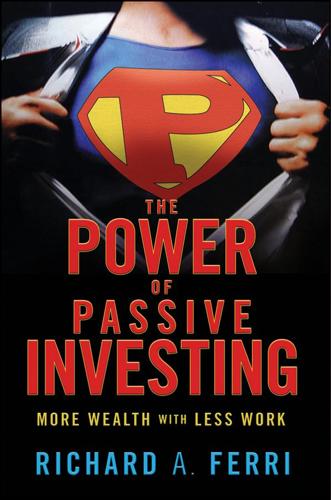
The Power of Passive Investing: More Wealth With Less Work
by
Richard A. Ferri
Published 4 Nov 2010
The law has remained relatively intact with minor improvements since then. REITs initially remained a small and rather obscure market due to regulations requiring the separation of management and rental property owners and the fact that pension funds were not allowed to invest in REITs. Deregulation by the Tax Reform Act of 1986 allowed REITs to manage their properties directly, and in 1993, investment barriers to pension funds investing in REITs were eliminated. These developments opened the door for new capital investment in REITs and to a flurry of new REIT offerings. Vanguard launched the first real estate specific index fund in 1996 to track all U.S. property REITs that trade on U.S. exchanges.
…
Swensen, David Swiss Finance Institute Systematic risk Tactical asset allocation: passive asset allocation and strategic asset allocation and timing gap and as zero-sum game Taxes: active funds and control of income tax payment personal trusts and tax-deferred savings tax efficiency Tax loss harvesting/tax swapping Tax Reform Act of 1986 Terminated funds Term risk Testamentary trusts Thatcher, William Theory of Investment Value, The (Williams) Three-factor international portfolios Three-Factor Model. See Fama-French Three-Factor Model Thrift Savings Plan (TSP) Time weighted returns Timing gap: DALBAR performance gap studies market timing gaps Morningstar studies time- vs. dollar-weighted returns Timing skill Titman, Sheridan Tobin, James Too-big-to-fail firms Top performance, predictors of: fund expenses as qualitative factors as ratings as Top quartile funds, mutual fund persistence Total return approach Transaction costs Treasury exposure Trend-following behavior: by individual investors by institutions Treynor, Jack Treynor Ratio TrimTabs Investment Research Triumph of the Optimists: 101 Years of Global Investment Returns (Dimson, Marsh & Staunton) T.

Debtor Nation: The History of America in Red Ink (Politics and Society in Modern America)
by
Louis Hyman
Published 3 Jan 2011
A college student would receive a solicitation, and if that graduate had secured a “career-oriented job paying $12,000 or more a year,” possessed a “permanent Wisconsin home address,” and attended a Wisconsin school, then the bank would give that student a credit card, even though the student did not “qualify for credit under [the] usual criteria.”134 The alma mater frequently got a cut of revenue from such cards for providing access and mailing lists.135 While class identity flagged, perhaps, as a way to organize labor, it rejuvenated the organization of capital among the professional classes. 1986: Tax Reform and Securitization In 1986, two events made debt more expensive for consumers to borrow and cheaper for banks to lend. While these two events, the Tax Reform Act of 1986 and the first credit card asset-backed security, had nothing to do with one another, they both pushed all forms of consumer debt, in unexpected ways, toward complete interchangeability. Though the Tax Reform Act sought to differentiate credit card debt from mortgage debt, market forces and financial innovation like asset-backed securities pushed them back together.
…
Congress passed a tax reform law that phased out the interest deduction on all forms of consumer borrowing except for mortgages. Wrapped up in the tax reform act that Ronald Reagan called the “second American revolution,” was a provision to end the long-standing interest deduction for nearly all types of consumer credit.136 Other features of the Tax Reform Act of 1986 received more attention at the time—the top marginal tax rate was dropped from 50 percent to 33 percent while the lowest tax rate increased from 15 percent to 18 percent— but leaving consumers only able to deduct the interest on their home borrowing, radically altered the terrain of consumer credit, transforming the relationship between home equity loans and other forms of consumer credit, as well as making debt absolutely more expensive.
…
Though the home equity interest would be deductible and have a lower interest rate, the thought of a home equity loan still “scare[d]” her. Home equity, in the 1990s, had begun to be used more frequently to consolidate credit card debt. The four-year phase out of deductible credit card interest, authorized by the Tax Reform Act of 1986, culminated in 1991—leaving only the interest on mortgages and home equity loans deductible. Debt consolidation did not become the leading use of home equity loans until 1991, when the tax deduction on other forms of debt was fully eliminated. Unlike second mortgages, home equity loans revolved, making them easier to add to, even though many had minimum borrowing amounts.
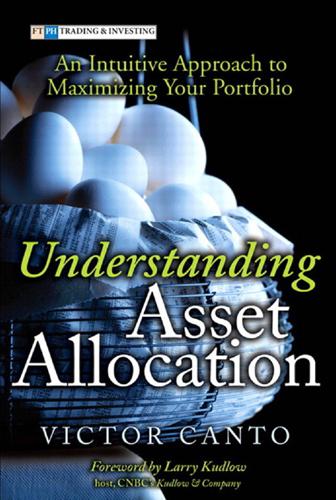
Understanding Asset Allocation: An Intuitive Approach to Maximizing Your Portfolio
by
Victor A. Canto
Published 2 Jan 2005
Investors and portfolio managers would obviously prefer to hold inelastic industries facing rising demand and elastic industries experiencing declining market conditions. 210 UNDERSTANDING ASSET ALLOCATION Elasticity and Profitability: Tax Rate Changes Indeed, investors and financial managers need to watch elasticities at all times. Before the enactment of the Tax Reform Act of 1986, which eliminated the investment tax credit, lengthened depreciation schedules, and made other changes to business taxation, most financial analysts focused on the different industries’ capital intensity. They reasoned if an industry was capital intensive, that industry’s tax payments would rise.
…
See elasticity survivor bias, 228 swing assets, 290n systematic risk, 3, 19-20, 113 T T-bills fixed-income cycles, 48-52 performance of, 16-17, 42 T-bonds CEM (capitalized earnings model) and, 90-94 fixed-income cycles, 48-52 optimal mix with equity stocks, 25-26, 37-39, 119 performance of, 16-18, 42-43 tax-rate changes and, 73 tactical asset allocation (TAA), xx, 18, 60, 101, 254 target return, 257 tax increase, equivalence to supply shift, 217-218 tax rates CEM (capitalized earnings model) modifications and, 95-96 elasticity and, 211 inflation and, 88-90 location effect and, 202 314 monetary policy and, 88-90 style cycles and, 56 Tax Reform Act of 1986, 73, 211 tax-rate changes, corporate behavior and, 68-70 capital gains, 76-79 debt financing, 73-76 incentive structure effects, 70-73, 80-84 taxes, elasticity and, 187-189 terrorism, stock market performance and, 202 top-performing asset classes, selecting, 8-11 Treasury bills. See T-bills Treasury bonds.
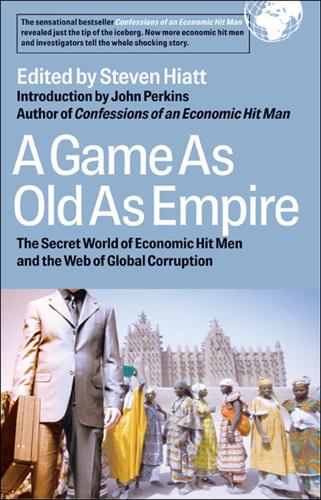
A Game as Old as Empire: The Secret World of Economic Hit Men and the Web of Global Corruption
by
Steven Hiatt; John Perkins
Published 1 Jan 2006
The Tax Foundation commissioned Charles McLure of the Hoover Institution at Stanford University to coauthor a statement to be delivered by the delegation. McLure had been deputy assistant secretary of the treasury from 1983 to 1985. He was responsible for developing proposals that ultimately became the basis of Reagan’s Tax Reform Act of 1986, which cut the top rate (from 50 to 28 percent) and increased the bottom rate (from 11 to 15 percent) at the same time, to orchestrate a massive transfer of the tax burden from the rich to the poor. McLure’s statement offered a range of prescriptions for Russia’s tax systems, including lower tax rates, and urged Russia to consult with foreign investors before passing any new legislation.
…
Index Abacha, Sani 44, 125 Abedi, Agha Hasan 69, 70, 75, 77, 86, 87 Abu Dhabi 69, 73, 75, 76 Adham, Kamal 75, 86, 87, 88 Afghanistan 26 drug trade in 70 civil war in 70–71 African Development Bank 251 Africa Oil Policy Initiative Group 119 Akbayan 192–93 Alamieyeseigha, Diepreye 121, 123 Algeria 15, 200, 266 Allende, Salvador 27 al-Qaeda 77, 89 and offshore banks 24 al-Taqwa Bank 71, 89 Altman, Robert A. 78, 79, 86, 88 American Express Co. 268 American Mineral Fields 99 Amin, Idi 27 Annan, Kofi 126 AngloGold 244 Anglo-Iranian Oil Company 14 Angola 27, 95 foreign debt 243, 244 Aquino, Benigno 26 Aquino, Corazon 190 Arbusto Energy, Inc. 76 Argentina 236 defiance of IMF 273 foreign debt 228, 230, 233, 241, 244, 273 popular movements in 276 World Bank lending in 169–73 Asari, Alhaji 121, 123, 128–29 Asian “tiger” economies 21, 229, 257n16, 258n27 Azerbaijan 200 Bahamas, as offshore banking haven 45, 89 Baker, Howard 100 Baker, James 239, 256n12 Baker Plan 228, 239–40 Balfour Beatty 211 Banca del Gottardo 71 Banca Nazionale del Lavoro 72 Banco Ambrosiano 71 Bank of America 69–70, 74, 77 Bank of England 84 Bank of Credit and Commerce International 24 accountants and 83–84, 86 arms trade and 72–73, 90 CIA and 69, 70, 71–72, 73, 76 drug trade and 70, 80, 87, 90 indictments 86–88 Iran-Contra 72 money laundering 69, 79–81, 90 operations 73–75, 86 owners 69–70, 75, 76 as Ponzi scheme 75 terrorism and 70, 72, 73, 88–90 U.S. operations 77–79 Bank of New York-Inter-Maritime Bank 83, 88–89 Barrick Gold Corp. 99, 244 Bath, James R. 76 Bechtel Corp. 3, 99, 138, 278 Belgium 101, 104 Bello, Walden 186–87, 273 Ben Barka, Medhi 26 Benin, foreign debt of 249 Berlusconi, Silvio 54 Bernabe, Riza 191 “big-box” stores, campaigns against 278 bin Faisal al-Saud, Prince Turki 75, 78 bin Laden family enterprises 71–72, 89 bin Laden, Haydar Mohamed 89 bin Laden, Osama 26, 77, 88, 89, 42 and BCCI 71 Binladen, Yeslam 89 bin Mahfouz, Khalid 76, 77, 78, 86, 87, 88, 89 bin Sultan al-Nahyan, Sheikh Zayed 69, 75 Blair, Tony 219, 250 Blandón, José 80 Blum, Jack 79–81, 85–86 Bolivia 236, 273 foreign debt 230, 246, 247, 249 gas industry 154, 208 water privatization in 277 Boro, Isaac 122 Brady, Nicholas 80, 256n12 Brady Plan 221, 227, 228, 240–41, 259n35 Brazil 18, 27, 130, 208, 216, 236 foreign debt 227, 228, 230, 241, 244 Bretton Woods agreements 63 Bretton Woods institutions see World Bank, International Monetary Fund British Gas 139 British Petroleum 139, 144, 153 British Virgin Islands, as offshore banking haven 54 Brown & Root 99 Brown, Gordon 126, 127, 219, 250 Burkina Faso, foreign debt of 246, 249 Burundi 95, 247, 249 Bush, George H.W., and administration 27–28, 69, 72, 77, 80, 87, 88, 91n10, 100, 138, 206, 271, 272 Bush, George W., and administration 66, 271, 278 and Iraq War 13, 28 Bush Agenda, The (Juhasz) 4, 275 Cabot Corporation 104, 112n32 Cameroon, foreign debt of 249 Canada 99, 101, 201, 268, 271 Canadian Export Development Corp. 201, 202, 203, 204, 206 capital flight 24, 43–44, 231–36, 253, 258n27 Carter, Jimmy 76, 140 Casey, William 70, 82, 90 Cavallo, Domingo Felipe 238 Cayman Islands, as offshore banking haven 65, 72, 73, 74, 75, 86 Center for Global Energy Studies 145 Center for Strategic and International Studies 119, 120 Central African Republic 231 Central Intelligence Agency 3, 5, 15 Afghan rebels and 70–71 BCCI and 69, 70, 71–72, 73, 76, 78, 79–82, 85 Saudi intelligence services and 75 Chad, foreign debt of 249 Chavez, Hugo 3, 25, 273 Cheney, Dick 28, 133 Chevron Oil 135, 138, 139, 144, 153 in Nigeria 123–24 Chile 236 1973 coup in 27 China 4, 229, 236 foreign debt 222–23 Third World resources and 5, 117–18, 120–21, 124, 126–27, 130 Chomsky, Noam Hegemony or Survival 4 Christian Peacemaker Team 96, 106–8 Citibank, Citigroup 75, 100, 130, 138, 226, 238, 268 Clifford, Clark 78–79, 85, 86, 88 Clinton, Bill, and administration 119, 120, 126, 212, 271 Coalition of Immokalee Workers 272, 280 COFACE 201, 205, 212 Cogecom 100 cold war 4 and decolonization 16–17 Colombia, human rights in 107 colonialism, decline of formal 13–14 coltan: efforts to control 5, 26, 95 shortages of 95 uses for 94 Commission for Africa 251 Communism: appeal of 14 fall of 4, 13, 27, 137–38, 238 Confessions of an Economic Hit Man (Perkins) 1–4, 6, 17 Congo, Democratic Republic of (Zaire): civil war in 26, 94–96, 108n3 corruption in 24, 254 foreign debt 220, 230, 247, 249 human rights in 107–8 rape as a weapon of war in 93, 96–98 Western role in 98–105, 109n4, 111n29 World Bank and 158 Congo Republic 230, 247, 249 cooperatives 276–77 corporations, as legal persons 277 CorpWatch 278 corruption: culture of 51–54 IMF/World Bank and 24–25, 157–74 offshore banking and 44–45, 52- power and 24 privatization and 24–25, 256n12 COSEC 209–10 Council on Foreign Relations 119–20 dam projects, 209–12 Dar al-Mal al-Islami 89 Daukoru, Edmund 125–27, 128 Davos see World Economic Forum DeBeers Group 101, 103 decolonization 13, 16–17 debt/flight cycle 231–36, 253, 258n27 debt relief, campaigns for 246, 252–55, 268 in U.S. 235 debt, Third World 32, 35 amount of relief 224–29 banks and 226–27, 229, 232–34 business loans 35–37, 227 cold war strategy and 17 corruption and 230, 231, 232, 253, 254, 257n23 1982 crisis 39, 55 disunity among debtor nations 237–39 dubious debts and 230, 235, 247, 253, 257n23, 261n68 growth of 18–19, 181, 229–36 as means of control 17, 23, 183–84 payments on 19, 190–91, 223, 228, 231, 247–48, 275 relief plans 220–22, 225–29, 239–52, 274 size of 221–24, 259n37, 260n46 social/economic impacts of 190–91, 231–36, 247–48 democracy: debt crisis and 236 economic reform and 276–79 global justice and 279–81 in Iraq 151–54 Deutsche Bank 226 drug trade 70, 80, 87 Dubai 73 Dulles, Alan 15 Eagle Wings Resources International 104 East Timor 205 economic development strategies: “big projects” and 16–17 debt-led 18–19 state-led 16–17, 19 economic forecasting 3 economic hit men 5 definition 1, 3, 18 John Perkins and 1–4, 17 types of 5, 18 Ecuador 236, 266 foreign debt 244 Egypt 14 Suez Crisis 15–16 Eisenhower, Dwight, and administration 15 elites, wealthy 4, 18, 57, 176, 183, 228, 232, 253 use of tax havens 43–44, 54–56, 65–66, 226, 232–34 El Salvador 26 empire see imperialism Eni SpA 144, 153 Enron 53, 54, 208–9 Ethiopia 230, 249 European Union 51 agricultural subsidies 22 environment degradation: development projects and 199, 200–211, 257n23 oil production and 115–16 export credit agencies: arms exports and 204–5 campaigns against 209–16 corruption and 200, 202–3, 205, 207–8 debt and 200 environmental effects 199, 200–211 nuclear power and 202, 205–6 operation of 197–201 secrecy of 205, 210–12 size of 201 World Bank and 199, 201, 202, 204 Export Credit Group 210, 215 Export Credits Guarantee Department 201, 205, 211 Export Finance and Investment Corp. 203, 204 export processing zones 178 Export Risk Guarantee 203, 211, 213 ExxonMobil 144 fair trade movement 280 Faisal, Mohammad al-89 Faux, Jeff Global Class War, The 4 Federal Bureau of Investigation 71 Federal Reserve Bank of New York 87 Federal Reserve System 78, 82, 88 Ferguson, Niall 13 First American Bankshares 78, 79, 82, 83, 85, 88 First Quantum Materials 101 First, Ruth 26 Focus on the Global South 187, 273 foreign aid 19 in Congo civil war 99–100 France 236, 244 empire 13 Suez Crisis and 15 free trade 4, 19, 21–23, 268, 271 British development and 21 U.S. development and 21 Free Trade Area of the Americas 271 Friends of the Earth 104, 269 G8 summits 212, 213, 219–20, 221, 246, 250, 271, 275 Gambia 243, 249 García, Alan 74 Gates, Robert 85 Gécamines 100, 104 General Agreement on Tariffs and Trade agricultural trade 186–87 establishment of 267 TRIPS 23 Uruguay Round 23, 267 General Union of Oil Employees 135–36, 141–44 Georgia 207 Germany 212, 213, 216, 236 export credit agency 201, 202, 203, 205, 206, 207, 209–11, 212, 215–16 Green Party 206, 215 Ghana 16 development projects in 16, 207 foreign debt 230, 247, 249 impact of IMF SAP 5, 22 Giuliani, Carlo 271 Global Awareness Collective 278 Global Class War, The (Faux) 4 Global Exchange 278 globalization 3 alternatives to corporate 275–79 economic 176–79, 230, 236 impacts of 185–90, 234, 236, 263–65 of the financial system 55, 63–66 Globalization and Its Discontents (Stiglitz) 3, 4 Global justice movement: achievements of 276–79 campaigns 269–72, 274–75 in Global North 268–69, 271–72, 274 in Global South 271–74 origins of 268–69 proposals of 275–79 protests by 265–66, 270–71 Global South see Third World Gonzalez, Henry 72, 90 Gorbachev, Mikhail 137 Goulart, João 27 Groupement pour le Traitment des Scories du Terril de Lubumbashi 104 Guatemala 14, 236 Arbenz government 26 Guinea, foreign debt of 249 Guinea-Bassau 26, 247, 249 Guyana: export credit agencies and 203 environmental problems 203 foreign debt 241, 243, 244, 246, 247, 249 Haiti 236, 249 World Bank and 158 Halliburton 3, 133, 278 Hankey, Sir Maurice 145 Harken Energy Corp. 77, 78 Heavily Indebted Poor Countries initiative 221, 225, 226, 230, 242–48, 275 conditions of 243–45 results of 248–50 Hegemony or Survival (Chomsky) 4 Hekmatyar, Gulbuddin 70 Helms, Richard 82 Henwood, Doug 23, 177–79 Heritage Foundation 121 Heritage Oil and Gas 100 Hermes Guarantee 201, 202, 203, 205, 206, 207, 209, 211, 212, 215–16 Honduras, foreign debt of 249 Hope in the Dark (Solnit) 281 Hungary, Soviet intervention in 16 Hussein, Saddam 28, 90, 141–42 and BCCI 72 Hutu people 94–96 Hypovereinsbank 209 Ijaw people 116, 121–23, 128 Illaje people 123 immigrant rights movement 281 imperialism 13–14 coups d’état and 27 divide-and-rule tactics 25, 26, 265 post-cold war changes 4–5 pressure on uncooperative countries 25, 142 resistance to 28, 115–17, 121–30, 143–44, 151–54, 176, 191–92, 265–66 resources and 98–106, 118–21, 133–34, 136, 139–40, 145 as system of control 17–28, 176 use of force 5, 25–28, 111n22, 113–14, 115–17, 123, 111n22 India 16, 119, 229, 236, 266 foreign debt 222, 223 export credit agencies and 206, 208 Maheshwar Dam 209–10 Indonesia 236 corruption in 202–3 export credit agencies and 200, 202–3, 205, 207, 216 foreign debt 228, 230, 244 inequality 44 Institute for Policy Studies 278 International Bank for Reconstruction and Development 157 International Development Association 157, 242 International Forum on Globalization 266 International Monetary Fund 3, 4, 19, 135, 275 conflicts of interest 244 debt relief and 221–22, 224, 226, 237, 240, 243–46, 250–51, 252 Iraq and 151–53 Malaysia and 273 neoliberalism and 176–79, 222 offshore banking and 43, 234 protests against 266 structural adjustment programs 22, 23, 245, 265–66 Rwanda and 100 Uganda and 100 International Tax and Investment Center 134–35, 138–39, 144–54 International Trade Organization 267 Iran 14, 90, 145, 200 coup against Mossadegh 14–15 nationalization of oil industry 14 Iran-Contra affair 71–72 Iraq: BCCI and 72 foreign debt 152 Gulf War and 28, 72, 140, 141, 146 human rights in 105–6 oil production and reserves 135–36, 139–54 production sharing agreements in 147–54 sanctions against 72, 142 social conditions in 135, 142, 143 U.S. occupation of 28, 140, 141–42, 146, 250, 275, 278 Israel: and Suez Crisis 15 Yom Kippur War and 17 Ivory Coast 230 foreign debt 244, 249 “jackals” 25–26 James, Deborah 273 Japan 216, 236 Japan Bank for International Cooperation 201, 202, 203, 241 Jersey 88 banking boom in 46–47 impact on island 46, 51–52, 56–62 as offshore banking haven 43, 45, 56–61 Johnson, Chalmers Sorrows of Empire 4 Jordan 241, 266 Jordan, Vernon 100 JPMorganChase 226, 238 Jubilee South 190 Jubilee 2000 268 Juhasz, Antonia Bush Agenda, The 4, 275 Juma’a, Hassan 135–36, 140, 142–44, 154 Kabila, Joseph 96 Kabila, Laurent 94, 96, 99 Kagame, Paul 94, 98–99 ties to U.S. 99 Kazakhstan 138, 139, 144, 150 Keating, Charles 83 Kenya 236 foreign debt 243, 244 Kerry, John 76 investigation of BCCI 79–83, 87, 89 Kirchner, Nestor 273 Korea, Republic of 229, 272 Korten, David When Corporations Rule the World 4 KPMG 52 Krauthammer, Charles 13 Krushchev, Nikita 16 Kurdistan 211–12, 214 Kuwait 133, 141, 146, 152, 154 labor exports 235–36 Lake, Anthony 119–20 Lance, Bert 77 Lawson, Nigel 242 Lawson Plan 221, 242 Lee Kyung Hae 272 Liberia, World Bank lending to 159–67 Liberty Tree Foundation 276 Li Zhaoxing 117–18, 124 Lu Guozeng 117 Lumumba, Patrice 26 Luxembourg, as offshore banking haven 72, 73, 74 Madagascar, foreign debt of 249 Mahathir, Mohamad 273 Malawi 254 foreign debt 243, 249 Malaysia 41–43, 229 defiance of IMF 273 Mali, foreign debt of 246, 249 Marcos, Ferdinand 31, 48, 175, 176, 181–85 markets, corporate domination of 16 Martin, Paul 54 mass media, manipulation of 25 Mauritania, foreign debt of 247, 249 McKinney, Cynthia; hearing on Congo 98–99, 110n11 McLure, Charles 137–39 mercenaries: in Congo 111n22 in Nigeria 5, 25–26, 113–14, 115–17 Mexico 207, 256n14, 273 foreign debt 55, 227, 228, 230, 233, 240–41, 244 labor exports 236 Zapatista uprising 272 Middle East, and struggle for oil 27–28 military-industrial complex 99 military interventions 27–28 Mizban, Faraj Rabat 141 Mitterand Plan 221 Mobutu Sese Seko 24, overthrow of 94 Mondlane, Eduardo 26 Mongolia 207 Morales, Evo 277 Morganthau, Robert 69, 84–87 Moscow, John 58, 87 Mossadegh, Mohammad 3, 14–15, 27 Movement for the Emancipation of the Niger Delta 122–24, 129 Movimento dos Trabalhadores Rurais Sem Terra (Landless Workers’ Movement) 272 Mozambique 26, 27, 230 foreign debt 241, 246, 249 Mueller, Robert 87 mujahadeen (Afghanistan): and BCCI 70 and drug trade 70 Mulroney, Brian 100 Multilateral Agreement on Investment 269–70, 281 Multilateral Debt Relief Initiative 222, 225, 230, 250–52 Multilateral Investment Agreement 269 multinational corporations: export credit agencies and 209–11 export processing zones and 178 globalization, pressure for 138, 268, 275 mercenaries, use of 25–26, 111n22, 113–14, 115–17, 123 resources and 101–6, 111n29, 112n31, 112n32 scandals 5 transfer mispricing by 49–51 offshore banks, use of 24, 49–51 patents, control of 23 Museveni, Yoweri 95 Myanmar, foreign debt of 230 Nada, Youssef Mustafa 71–72 Namibia 95 export credit agencies and 207 Nasser, Gamal Abdel 15–16 National Commercial Bank of Saudi Arabia 88–89 National Family Farm Coalition 272 nationalism: pan-Arab 15 Iranian 14 Nehru, Jawaharlal 16 neocolonialism see imperialism neoliberalism 4, 19 critique of 176–79, 190–92, 234, 236 defined 176–77 economic development and 176–79, 232 economic strategies 178–81, 222, 230, 231, 236 Netherlands, overseas empire of 13 Newmont Mining Corp. 244 New World Order 27–28 Nicaragua 207 foreign debt 225, 230, 247, 249 U.S. proxy war against 26, 27, 79 Nicpil, Liddy 190–91, 192 Nidal, Adu 73 Niger, foreign debt of 241, 249 Niger Delta People’s Volunteer Force 121, 123 Niger Delta Volunteer Service 122 Niger Delta region: attack on oil platforms 116–17 as “Next Gulf” 118–21 pollution from oil production 115–16 struggle against Shell 115–16, 121–24 Nigeria 200, 266 China and 117–18 colonial rule 115 corruption in 44–45, 230 foreign debt 223, 230, 233, 243, 244 oil production 115–16, 125–27 World Bank lending in 158, 167–69 Nkrumah, Kwame 16 nongovernmental organizations 239, 250 Noriega, Manuel 80 and BCCI 72, 79 North American Free Trade Agreement 4, 268, 272 nuclear power 205–6, 210 Obasanjo, Olusegun 125, 127 Obiang, Teodoro 48 O’Connor, Brian 144–45 OECD Watch 105 offshore banking havens: arms trade and 71–73 campaign against 62–64 central role in world trade 44, 47–48, 64–65 corruption and 24, 44–45, 52–56, 64, 231–33, 253 drug trade and 70 extraction of wealth 43, 54–56, 64–65, 226, 231–33, 253, 258n58 financial centers and 234, ignored by academia 44, 234 secrecy and 47–48, 53, 66 tax evasion and 43, 48, 49–51, 54, 57–59, 64–65, 226, 232 terrorism and 71, 88 Ogoni people 122–23, 125 Okadigbo, Chuba 116 Okonjo-Iweala, Ngozi 118 Okuntimo, Paul 123 Oil Change International 278 oil price spikes 236 oil production and reserves: future shortages of 28, 140 Indonesia 207 Iraqi 135–36, 144–54 Nigerian 113–14, 128–29 strategies to control 25–26, 27–28, 139–40 OM Group, Inc. 104, 112n31 OPEC 125–26, 128 1973 oil embargo by 17 dollar deposits in First World 17–18 Organisation for Economic Co-operation and Development 135, 269 “Action Statement on Bribery” 216 export credit agencies and 210, 215 Guidelines for Multinational Enterprises 101, 102, 105–6, 112n31 “OECD Arrangement” 215 Overseas Private Investment Corp. 204, 206–9 Oxfam 43, 62–63, 250 Pakistan 90 Afghan mujahadeen and 70–71 BCCI and 70 export credit agencies and 207 foreign debt 244 Panama 3, 26, 72 as offshore banking haven 73, 74 Papua New Guinea: export credit agencies and 204 mining and environmental problems 204 Paris Club of creditors 220, 225–26, 227, 228, 242, 252 Peru 74 foreign debt 241 impact of IMF SAP 22 petrodollars, recycling of 17–18 Perkins, John 19 Confessions of an Economic Hit Man 1–2, 17 Pharaon, Ghaith 76, 77, 86, 87, 88 Philippines, the 31–34, 35–36 corruption in 181–82 democratic movements in 182–85, 236 economic decline in 187–89 emigration from 189, 236 foreign debt 181, 190–91, 230, 241, 244 Marcos regime 31, 34, 175, 176, 180–85, 261n61 martial law in 180–85 social conditions in 179–80, 185–86, 189–91 U.S. rule 175–76 World Bank and 158, 178–81 Pinochet, General Augusto 27, 45–46, 48 PLATFORM 140, 156n28 Portugal 209–10 Posada Carriles, Luis 26 poverty reduction strategy programs see structural adjustment programs Price Waterhouse 83–84 privatization 191 production sharing agreements 147–54 protectionism 21, 181, 186–87 proxy wars 27, 70–71 Public Citizen 269, 273 public utilities, privatization of 191, 261n61, 277 Rahman, Masihur 85 Reagan, Ronald, and administration 19, 79, 87, 136–37, 239 Iran-Contra affair 72 Rich, Marc 90 Rights and Accountability in Development 101, 104, 105 Rio Tinto Zinc 204 Ritch, Lee 79–80 Robson, John 138 Roldós, Jaime 3, 26 Roosevelt, Kermit 15 Rumsfeld, Donald 138 rural economic development 183, 186–87 Russia: debt relief and 225 oil industry 154 transition to capitalism 137–39, 258n28 Rutledge, Ian 149 Rwanda 94–96, 98, 249 massacre in 94, 99 SACE 201 Sachs Plan 221 Saleh, Salim 95 Saõ Tomé, foreign debt of 247, 249 Saud al-Fulaij, Faisal 86, 87 Saudi Arabia 3, 88 and BCCI 70, 75 Saro-Wiwa, Ken 125–26 Scholz, Wesley S. 104 Scowcroft, Brent 72 Senegal 16, 249 Senghor, Léopold 16 September 11, 2001, terrorist attacks 71 Shell Oil 144 Nigeria and 113–15, 122, 123, 125–29 at World Economic Forum 127 Shinawatra, Thaksin 54 Sierra Club 269 Sierra Leone 247 SmartMeme 276 Solnit, Rebecca Hope in the Dark 281 Somalia 251 Sorrows of Empire (Johnson) 4 South Africa 236 military interventions 27 Truth and Reconciliation Commission 26 Soviet Union 13, 14 de-Stalinization 16 Hungary, intervention in 16 influence in Third World 14 U.S. and 137 Stephens, Jackson 76, 77 Stiglitz, Joseph 24 Globalization and Its Discontents 3, 4 structural adjustment programs (SAPs) 19, 229–30 in Ghana 5, 22 in Peru 22 in the Philippines 176–79, 183–85, 190–92 in Zambia 22 Sudan 230, 251 Suharto 200, 202–3 Syria 211 Switzerland, as offshore banking haven 45, 65, 72 Taco Bell, boycott of 280 Tanzania, foreign debt of 247, 249 tax evasion 43, 48, 49–51, 54, 57–59, 64–65 Tax Foundation 137–38 tax havens see offshore banking havens Tax Justice Network 63 Tax Reform Act of 1986 138 Tenke Mining 99 terrorism: as EHM strategy 26, 72 financing of 42, 88–89 inequality and 44 Islamist 71–72, 89 Palestinian 73 Thatcher, Margaret 19, 138 Third World: as commodity producers 17, 23 conditions in 5, 96–97, 106–8, 116, 179–80, 185–90, 234, 236 development strategies 176–79 divisions among countries 265–68 elites in 25, 28, 43–44, 176, 226, 232–34 emergence of 14 lack of development in 232, 237 terms of trade and 22, 178–79 Third World Network 269 Tidewater Inc. 113 Torrijos, Omar 3, 26 Total S.A. 144, 153 trade unions 135–36, 141–44, 180, 186, 269, 274 transfer mispricing 49–51 cost to Third World 50 Transparency International 45 Turkey: export credit agencies and 206 Ilisu Dam 211–14 Turkmenistan 200 Uganda 94–96 foreign debt 241, 246, 249 Union Bank of Switzerland 57, 58, 77, 226, 250 United Arab Emirates 69, 73 United Fruit Company 15 United Kingdom 213 NCP for Congo 102–3 empire 13–14, 115, 129, 145 Iran and 14–15 Iraq occupation and 146, 151, 152 offshore banking and; Suez Crisis and 15 United Nations: trade issues and 265, 276 Panel of Experts, Congo 100–106, 112n32 United Nations Conference on Trade and Development 220, 265, 267 United States: agricultural subsidies 22 aid 98 as empire 13, 28 cold war strategy of 16, 17, 24, 26 in Congo 99, 104, 105 debt-led development strategy of 176–79 Iran coup and 14–15 Iraqi oil and 133–34, 136, 139–40 Iraq wars 72, 133, 141–42 Islamists and 26 Nigerian oil and 118–21 Philippines and 175–76, 180 strategic doctrines 27–28, 118–19 support of Contras 72 trade deficit 23 trade policies 267 U.S.
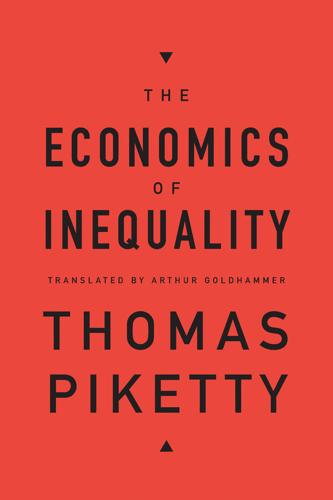
The Economics of Inequality
by
Thomas Piketty
and
Arthur Goldhammer
Published 7 Jan 2015
Stiglitz. 1976. “Equilibrium in competitive insurance markets.” QJE 90: 629–650. Shavit, Y. and H. P. Blossfeld. 1993. Persistent Inequality: Changing Educational Attainment in 13 Countries. Boulder: Westview. Slemrod, J. 1995. “Income creation or income shifting? Behavioral responses to the Tax Reform Act of 1986.” AER 85 (2): 175–180. Solow, R. 1956. “A contribution to the theory of economic growth.” QJE 70: 65–94. ______ 1958. “A skeptical note on the constancy of relative shares.” AER 48: 618–631. Spence, M. 1974. Market Signalling: Informational Transfer in Hiring and Related Screening Processes.

There Is No Place for Us: Working and Homeless in America
by
Brian Goldstone
Published 25 Mar 2025
Much like Section 8 vouchers—the other federal program intended to support low-income tenants—LIHTC was born of a political and ideological opposition to public housing. Instead of fixing the chronic underinvestment in public housing that had led projects to deteriorate, the federal government tried to encourage the private sector to step in. The culmination of these efforts, LIHTC was a last-minute addition to President Reagan’s Tax Reform Act of 1986, famous for slashing the tax rate on the wealthy. No longer would the government act as a direct party in the construction and maintenance of low-income apartments. As a public-private partnership, LIHTC introduced a model whereby the federal government was now only indirectly involved. The program quickly took off.
…
(PCCI), 195–96, 221 ProLogistix, 41, 45 PROMOVE, 25 property values, 37, 115, 118 ProPublica, 252 prostitution, 72, 85, 132–33, 322 Public Works Administration (PWA), 55–56 Q QLS Gardens Apartments, 51–55, 59–63, 113, 169–70, 178 Quaker Voluntary Service (QVS), 275–76 “qualified contracts,” 262–64 Quigley, Adam, 253, 254, 255–56 QuikTrip, 75–76, 181 Quinn, 252, 276–78, 284 R Rachel and Her Children (Kozol), 354–55 Raghuveer, Tara, 362 Rashana, 278 Reagan, Ronald, 59, 171, 353–54 “Reaganville,” 354 real estate lobbyists, 62, 362–63 Reconstruction, 203–4 Recycled Investments, LLC, 115 Red Cross, 40–41 redlining, 25–26, 204 Red’s Beer Garden, 267, 336 Reed, Kasim, 11 Regina, 32, 167–68, 196, 319–21 rent control, 362–63 “rent gap,” 117 rent-to-own stores, 339 Republican Revolution, 26 Research Action Cooperative, 182–83 Residence Inn by Marriott, 184–85, 191–92, 209, 212, 227–28 Resthaven Garden of Memory, 131 Reynoldstown, 118, 262 Rise of the Creative Class, The (Florida), xix Robert, 46, 246 Rockmor Plaza, 321–22 rooming houses, 70, 198, 247–48, 301–7 Roosevelt, Franklin D., 56 Rosa, 261 Roses Discount Stores, 140 Rossi, Peter, xvii Roswell Road, 23, 95 Roswell Road Partners, LLC, 126 S “safe parking lots,” xvi Salvation Army, 73, 186, 194–96, 221, 288, 289, 290, 318, 322 Samantha, 245–46 Sandhu, Dr., 122–25, 127 Sandy Springs, 25–26, 95, 97, 99, 127, 202, 239, 308–16 San Francisco, xx Santander Bank, 327 SAS Retail Services, 341–42, 347 Scarface (movie), 161 Scarface (rapper), 25, 90 Seattle, xvii SEC (Securities and Exchange Commission), 241–42 Second Bill of Rights of 1944, 361 2nd2None, 11 Section 8, 7, 54, 62, 111, 171, 175, 188, 212, 242 SecurAmerica, 8 security deposits, 363 Britt and, 120, 260 Celeste and, 43, 82, 84 Kara and, 217, 229 Maurice and Natalia and, 98–99, 100, 308–9 Michelle and, 221 segregation, 25–26, 186, 265 Sertraline, 124, 128 “severely cost burdened,” xvii, 52 Shallowford Road, 215 sharecropping, 203 Shay, 205, 206 “shelter in place,” 149, 183 Simmons, Danielle, 29–34, 101–2, 104–9, 130–36, 167–68, 196, 221–22, 288–94, 298–99, 300, 318–21, 323–24, 356 Simmons, DJ, 140, 164, 167–68, 196, 288–94, 318–24 at A2B Budget Hotel, 106–9, 130–32 at Days Inn, 105–6 at Eastwyck Village, 30–31, 32, 101–2, 104–5 at Efficiency Lodge, 134–37 estrangement from mother, 167–68, 289, 290–93, 317–24 Memorial Drive apartment, 221–22, 288–94 Pink and, 293–94, 298–300, 318–24 Simmons, Michelle, xxi, 28–34, 101–9, 130–40, 288–94, 317–24 at A2B Budget Hotel, 106–9, 131–34, 298–99, 353 background of, 29–30, 31–33 at Budgetel, 257, 273, 274, 283–84, 298–300 CAPS program, 131, 136, 138, 139, 140, 195, 227 car sleeping of, 167–68 childcare issues, 136–40 Christmas Eve dinner, 28–31, 33–34 COVID-19 pandemic and, 164, 196, 221 at Days Inn, 105–6, 107, 299 Divorce Court appearance, 103–4, 106, 221–22 drinking of, 164, 168, 317–18, 321 at Eastwyck Village, 28–34, 101–5 at Efficiency Lodge, 134–35, 136–37, 197–98, 220–22, 353–54 estrangement from children, 167–68, 289, 290–93, 317–24 Juneteenth, 174, 196, 197–200 Memorial Drive apartment, 220–22, 288–94 Nick and, 290–93, 317–23 Pink and, 163–68, 194–200, 220–22, 293–94, 318 at Regina’s place, 291, 318–21 Salvation Army job, 221, 288, 289, 290, 318, 322 at Salvation Army shelter, 194–96, 322–23 welfare and CAPS assistance, 136–39, 166–67, 195–96 Simmons, Skye, 29–31, 33–34, 101–2, 105–9, 106–7, 130–33, 135–40, 163, 164, 166–68, 194–97, 221–22, 288–94, 318, 320–21, 323–24 single-room occupancy (SROs), 354–55 Six Flags Over Georgia, 27 Skylark, The, 266–68, 335–36 Sky Zone Trampoline Park, 315 slavery, 180, 197, 203–4 slumlords, 65, 303 “smart growth,” xix Smith, Neil, 117 Smoothie King, 72 SNAP (Supplemental Nutrition Assistance Program), 156 “social housing,” 364 Social Security, 82, 167, 216, 222, 284, 286, 321, 361 Social Security Disability Insurance (SSDI), 303 Solomon’s Temple, 73 SoulShine, 139–40, 164 South DeKalb Mall, 33, 300 Southern Poverty Law Center, 242, 363 Southern Towers, 279 Southside Trail, 118, 262, 264, 336 Spam, 200–201 Springhill Lake, 90 Starwood Capital Group, 241, 360 State Farm, 22, 23, 26, 97, 121–22, 129, 145–46, 155, 201, 203 Steak n’ Shake, 177–78 Stein, Samuel, 117 Stephanie, 251, 278, 279–80, 283 Step of Faith Christian Academy, 227–28 stereotypes, 123 Steve, 52–54 Stone Mountain, 220, 288, 319 STR, Inc., 241 student homelessness, 47, 86–87, 358 subprime auto loans, 327 subprime mortgages, 37, 42, 119, 182, 204, 327 Summer, 27, 88, 93–94, 100, 125–26 Sunny Cascade, 210 Supplemental Security Income (SSI), xx, 80, 261 T “tack and mail,” 43 Taco Bell, 45, 224, 236, 307 Talk of the Town, 224, 235–36, 304 Tampa, 11, 305–7 Target, 90, 91 Tasha, 273, 275 tax credits. See Low-Income Housing Tax Credit Tax Cuts and Jobs Act of 2017, 171, 266–67 tax policy, 171–72, 262–64, 266–67, 364 Tax Reform Act of 1986, 171–72 Taylor, Anthony, 22, 24, 25, 27, 88, 95, 99, 100, 128–29, 146, 198, 200–204, 240, 310–11, 315 Taylor, Matthew, 88, 89–90, 94, 121, 127–29, 146, 200–204, 309–11, 313–16 Taylor, Maurice, xxi, 22–27, 88–100, 121–29, 144–47, 200–204, 239–44, 360 Aaron’s death, 27, 88–89, 92–94, 99, 123, 239 Atlanta move of, 25–26 Enterprise job of, 22–23, 26–27, 125, 144–45 eviction, 125–28 at Extended Stay America, 129, 144–45, 155–56, 200–204, 240–44, 309, 353 Liberty Rent and, 98–99, 100, 122–23, 243–44, 308 Sandy Springs apartment, 308–16 Uber Eats job, 125, 127, 155 Victoria Heights apartment, 26–27, 122, 155, 243 in Washington, D.C., 25, 91–93, 239–40 at The Whitney, 99–100, 122–29, 155, 240, 243, 244, 310, 316 Taylor, Natalia, xxi, 22–27, 88–100, 121–29, 239–44, 282, 360 Aaron’s death, 27, 88–89, 92–94, 99, 123, 239 apartment hunts, 95–99, 239, 242–44 Atlanta move of, 25–26 COVID-19 pandemic and, 144–47, 202, 240–41 education of, 90 eviction, 125–28 at Extended Stay America, 129, 144–47, 155–56, 200–204, 240–44, 309, 353 Liberty Rent and, 98–99, 100, 122–23, 243–44, 308 NACA, 312–16 panic attacks of, 121–25 Sandy Springs apartment, 308–16 State Farm job of, 22, 23, 26, 97, 121–22, 129, 145–46, 155, 201, 203 Victoria Heights apartment, 26–27, 122, 155, 243 in Washington, D.C., 25, 91–93, 239–40 at The Whitney, 99–100, 122–29, 155, 240, 243, 244, 310, 316 Taylor, Shantel, 22, 24, 25, 27, 88, 91–95, 100, 122, 128–29, 146, 155, 200–204, 240, 309–11, 315 Techwood Homes, 55–57, 58 Temporary Assistance for Needy Families (TANF), 137–39 tenants’ rights movement, 276–81, 362 Tenant Union Federation, 362 Thanksgiving, 9, 28, 110–11, 318 Theresa, 3–6, 9, 11, 51, 57, 60, 110–11, 112, 173–74, 175, 177, 269, 295–96, 298 Thirteenth Amendment, 203 “30 percent rule,” 51–52, 124, 171, 188 This Is It!
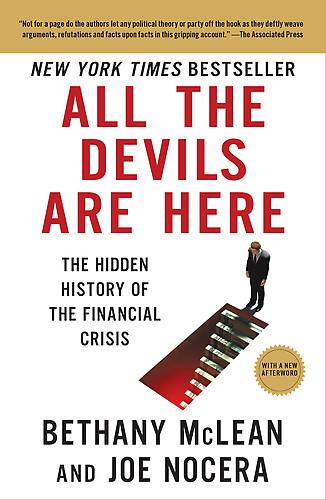
All the Devils Are Here
by
Bethany McLean
Published 19 Oct 2010
To this day, though, there is disagreement over who did the heavy lifting. (“We had the brainpower and did most of the work on the Hill,” Ranieri recalls; Maloni says that Fannie “did the lion’s share of the work” pushing the bill through Congress.) In 1986, after a number of fits and starts, Congress finally passed the second bill as part of the Tax Reform Act of 1986. It was known as the REMIC law, referring to the real estate mortgage investment conduit, which became the shorthand phrase for deals in which mortgage-backed securities were carved into tranches. In essence, the law created a straightforward process for issuing multiclass securities and avoiding double taxation.
…
See Derivatives Swecker, Chris Swenson, Michael Synthetic CDOs dangers of downturn and rebound features of Goldman Sachs Merrill Lynch safety, facade of Tannin, Mark and Bear hedge fund collapse indictment of Tanoue, Donna Tavakoli, Janet Taxation double, MBS exemption write-downs Tax Reform Act of 1986 Taylor, John Taylor, Lisa Tett, Gillian Thain, John Thomas, Jason Thompson, Kennedy Thrifts. See Savings & loan banks (S&Ls) Timberwolf Tourre, Fabrice Tranches of CDOs of CMOs double-taxation exemption features of profitability of ratings, manipulation of super-senior of synthetics Treasury Secretary.
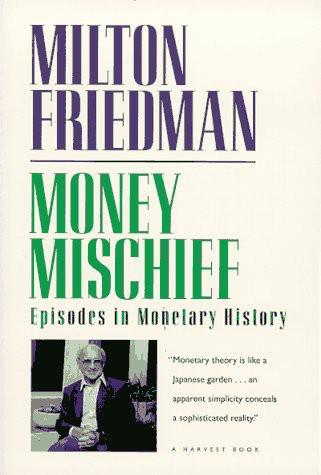
Money Mischief: Episodes in Monetary History
by
Milton Friedman
Published 1 Jan 1992
Each year there was talk of cutting taxes. Yet there has been no reduction in taxes. On the contrary, taxes, correctly measured, have gone up—at the federal level, from 22 percent of national income in 1964 to 26 percent in 1978 and 28 percent in 1989, despite the Reagan tax cuts in 1981 and the Tax Reform Act of 1986; at the state and local level, from 11 percent in 1964 to 12 percent in 1978 and 14 percent in 1989.* A third way that inflation yields revenue to the government is by paying off—or repudiating, if you will—part of the government's debt. Government borrows in dollars and pays back in dollars.
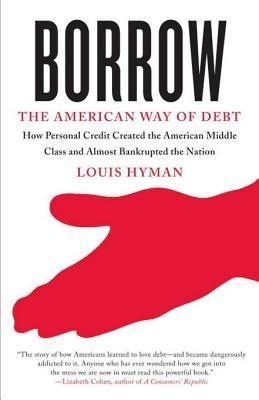
Borrow: The American Way of Debt
by
Louis Hyman
Published 24 Jan 2012
Private intermediaries could not take over this role and would almost certainly lock up the system. In this, as in the tax reform, Reagan bent to political and business pressure, authorizing a raise in the debt ceiling of the Maes and Mac in 1986, even as he continued to pursue his tax reform. When the Tax Reform Act of 1986 was finally passed, the mortgage interest deduction remained, but all other consumer interest deductions were eliminated. Even at the time, policy wonks wondered what would happen now that mortgage debt was so different from other forms of debt. Without the consumer interest deductions, economists reasoned, Americans would borrow less, since debt would now cost more.
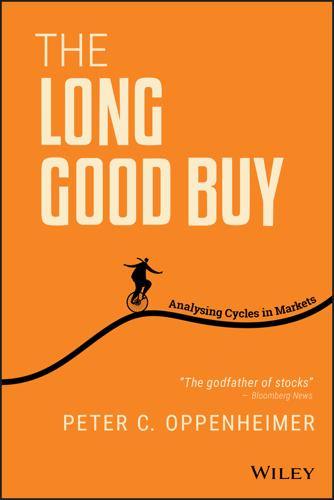
The Long Good Buy: Analysing Cycles in Markets
by
Peter Oppenheimer
Published 3 May 2020
These changes were felt in the world of politics, too, where there were stirrings of major reforms that would change the shape of the global political and economic system in the years that followed. The supply-side reforms of UK prime minister Margaret Thatcher and US president Ronald Reagan were in full swing, and the divisive miners' strike in the UK had just ended with the closure of most of the nation's coal mines. The US introduced the Tax Reform Act of 1986, designed to simplify the federal income tax code and broaden the tax base. Meanwhile, international events were also in flux. Mikhail Gorbachev had just (in March 1985) become leader of the Soviet Union following the death of former leader Konstantin Chernenko. During a speech in Leningrad in May 1985, President Gorbachev admitted to the problems in the economy and poor living standards; he was the first Soviet leader to do so.
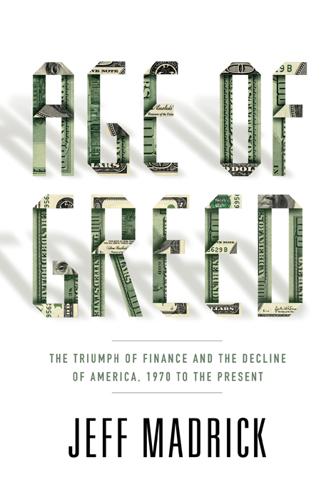
Age of Greed: The Triumph of Finance and the Decline of America, 1970 to the Present
by
Jeff Madrick
Published 11 Jun 2012
And more and more Americans had no health insurance. Reagan’s revolution was sweeping, but the sharp reduction in income taxes truly marked America’s ideological transformation, the nation wholeheartedly renouncing its willingness to support government at former levels of taxation. After the Tax Reform Act of 1986, the top income tax rate was just 28 percent. To advocates of low taxes like Reagan, government had become big, wasteful, and, most important, exploitive of working Americans. To his most loyal supporters, government was worse—it was menacing, as he had been saying for years. The Reagan tax cuts dominated all these policies.
…
Morris, The Trillion Dollar Meltdown: Easy Money, High Rollers, and the Great Credit Crash (New York: PublicAffairs, 2008), p. 41. 19 AS USUAL, RANIERI ARGUED: Quinn, “Securitization and the State,” p. 6. 20 REAGAN WAS AN ADVOCATE AS WELL: Ranieri also had an influential hand in rewriting tax laws that were until this point obstacles to the creation of the trusts required by the MBSs and new CMOs; the new tax rules were passed as part of the Tax Reform Act of 1986. Alyssa Katz, “The Dubious Birth of Mortgage-Backed Securities,” Slate, June 25, 2009, http://www.thebigmoney.com/articles/history-lesson/2009/06/25/dubious-birth-mortgage-backed-securities?page=0,2. 21 RANIERI WAS FIRED: Charles Gasparino, The Sellout: How Three Decades of Wall Street Greed and Government Mismanagement Destroyed the Global Financial System (New York: HarperCollins, 2009), p. 75. 22 IN 1988, HE LEFT TO RUN: Ibid., pp. 66–69, 82. 23 THE ANNUAL LENDING BY THE INCREASINGLY OUTDATED THRIFTS: “Mortgage debt outstanding,” U.S.
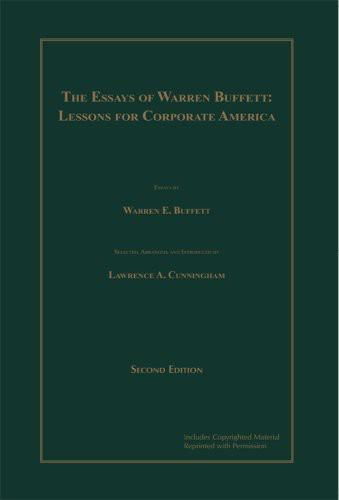
The Essays of Warren Buffett: Lessons for Corporate America
by
Warren E. Buffett
and
Lawrence A. Cunningham
Published 2 Jan 1997
Additionally, the lobbying that executives engage in may have an unfortunate by-product: In my opinion, the business elite risks losing its credibility on issues of significance to society-about which it may have much of value to say-when it advocates the incredible on issues of significance to itself. 200 CARDOZO LAW REVIEW 1. [Vol. 19:1 Distribution of the Corporate Tax Burden 58 The Tax Reform Act of 1986 affects our various businesses in important and divergent ways. Although we find much to praise in the Act, the net financial effect for Berkshire is negative: our rate of increase in business value is likely to be at least moderately slower under the new law than under the old. The net effect for our shareholders is even more negative: every dollar of increase in per-share business value, assuming the increase is accompanied by an equivalent dollar gain in the market value of Berkshire stock, will produce 72¢ of after-tax gain for our shareholders rather than the 80¢ produced under the old law.
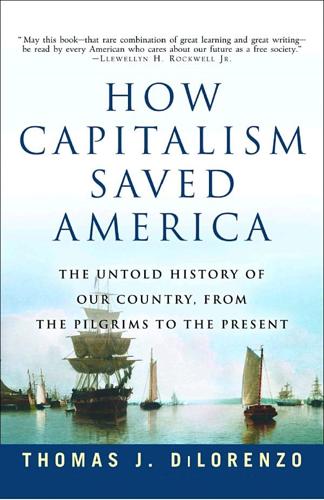
How Capitalism Saved America: The Untold History of Our Country, From the Pilgrims to the Present
by
Thomas J. Dilorenzo
Published 9 Aug 2004
Every couple of years the beer industry is threatened with a higher excise tax on beer, which would cut into sales somewhat, and the industry is compelled to fork over large sums of money to members of Congress to avoid this additional taxation. Every several years Congress proposes a major alteration of the income tax code, which usually becomes the Mother of All Political Extortion Rackets. As McChesney reports, in one such instance, after the Tax Reform Act of 1986 was proposed, “members of the tax-writing committees nearly tripled their take from political action committees during the first six months of this year.”7 The money came from insurance companies, drug companies, military contractors, and even horse breeders, all of whom were concerned about being negatively affected by the proposed tax legislation.
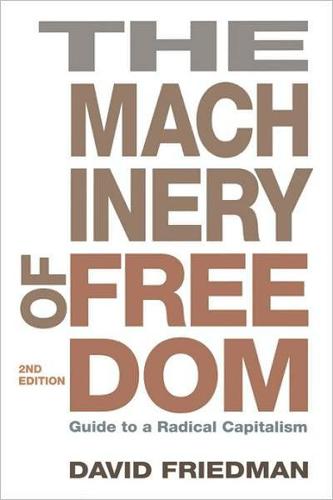
Machinery of Freedom: A Guide to Radical Capitalism
by
David Friedman
Published 2 Jan 1978
This tended to make firms grow larger than the size which was optimum from the standpoint of producing goods efficiently. When I first wrote this chapter, I pointed out that the effect would disappear if the tax laws changed in a way that eliminated this tax advantage but that with steeply graduated tax rates capital gains was too valuable a loophole to be surrendered easily. Fourteen years later, the tax reform act of 1986 sharply reduced the top tax rates and eliminated the special treatment of capital gains. One eventual result should be a reduction in the size of inefficiently large firms. The conclusion of this and the previous chapter, taken together, is clear. Monopoly power exists only when a firm can control the prices charged by existing competitors and prevent the entry of new ones.
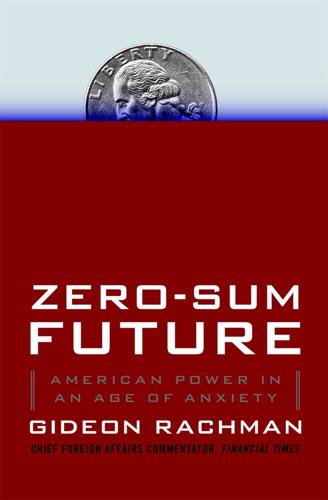
Zero-Sum Future: American Power in an Age of Anxiety
by
Gideon Rachman
Published 1 Feb 2011
As president he set about “reducing federal income tax rates from top to bottom.”4 Within six months of taking office he had pushed through new legislation, cutting the top rate of tax from 70 to 50 percent. The measure was hailed by his supporters as “the biggest tax cut in American history.”5 The Tax Reform Act of 1986 increased personal exemptions, thus ensuring that six million more poor Americans would pay no income tax at all. It also cut the marginal rate of tax for top earners further from 50 to 28 percent—bringing it down to less than half the level when Reagan took office. Corporate taxes were cut from 48 to 34 percent.
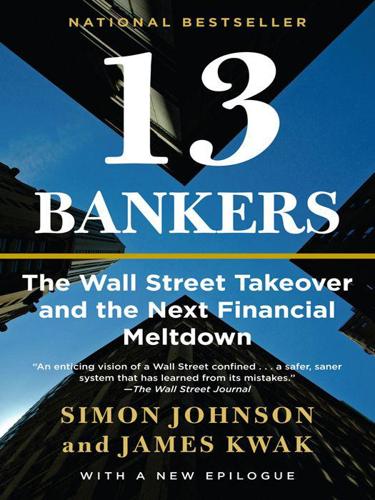
13 Bankers: The Wall Street Takeover and the Next Financial Meltdown
by
Simon Johnson
and
James Kwak
Published 29 Mar 2010
The solution to Salomon’s problem was a new bill, the Secondary Mortgage Market Enhancement Act of 1984, which Ranieri helped create and defended before Congress.60 This bill cleared away the tax issues and state regulations that had hampered Salomon’s earlier efforts, giving investment banks the ability to buy up virtually any mortgages, pool them together, and resell them in slices with varying levels of risk. Securitization was made even easier when the Tax Reform Act of 1986 created the Real Estate Mortgage Investment Conduit, or REMIC, which created tax advantages making mortgage-backed securities more attractive. These new laws were unequivocally good for the investment banks, which gained a new market from which they could earn millions of dollars in fees.
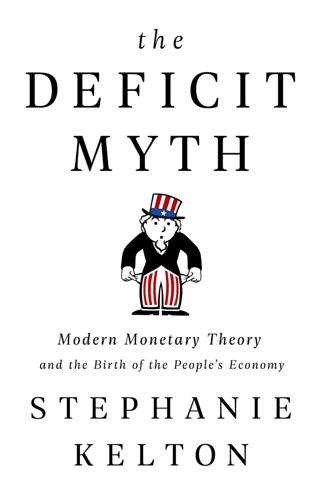
The Deficit Myth: Modern Monetary Theory and the Birth of the People's Economy
by
Stephanie Kelton
Published 8 Jun 2020
Christal Hayes, “Alexandria Ocasio-Cortez: Why Does GOP Fund ‘Unlimited War’ but Not Medicare Program?,” USA Today, August 9, 2018, www.usatoday.com/story/news/politics/onpolitics/2018/08/09/alexandria-ocasio-cortez-republicans-finance-war-not-healthcare-tuition/946511002/. 17. Calvin H. Johnson, “Fifty Ways to Raise a Trillion,” in Tax Reform: Lessons from the Tax Reform Act of 1986, Hearing Before the Committee on Finance, US Senate (Washington, DC: US GPO, 2010), 76, books.google.com/books?id=e4jnhl_AkLgC&pg=PA76&lpg=PA76&dq=calvin+johnson+shelf+project&source=bl&ots=yeBPKBOXV1&sig=ACfU3U3OXXYvNQgrroi7ZBFI8jrStMJJBg&hl=en&sa=X&ved=2ahUKEwiTqekg6blAhVK11kKHXiwAtkQ6AEwEHoECAkQAQ#v=onepage&q=calvin%20johnson%20shelf%20project&f=false. 18.

Capitalism, Alone: The Future of the System That Rules the World
by
Branko Milanovic
Published 23 Sep 2019
Fiscal data tend to show somewhat higher concentration of income from capital, but they have their own shortcomings: the units can be at times families and at times individuals simply because of changes in tax rules, or there may be sudden movements between capital income reported in tax returns and corporate profits (using one or the other depending on what is taxed less, as happened in the United States with the Tax Reform Act of 1986). 25. The existence in rich countries of an important part of the population without assets is not unique to the United States. Grabka and Westermeier (2014) estimate that 28 percent of German adults have zero or negative net wealth, while the bottom half of the Swedish population has negative wealth (Lundberg and Walderström 2016, table 1). 26.
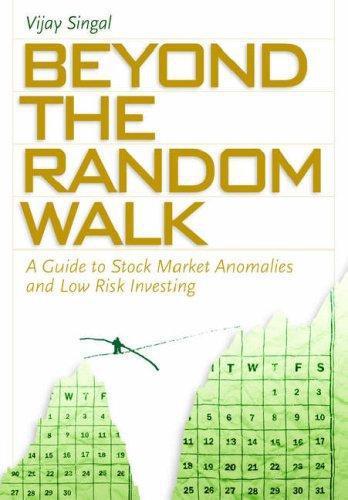
Beyond the Random Walk: A Guide to Stock Market Anomalies and Low Risk Investing
by
Vijay Singal
Published 15 Jun 2004
RETURNS AROUND THE TURN OF THE YEAR Table 2.1 depicts the returns by month as an aggregate over the entire sample period. In Tables 2.2 and 2.3 you can view the results from a closer angle: around the turn of the year and by year from 1988 to 2000 (until January 2001). Only the period since the Tax Reform Act of 1986 is considered because of tax changes affecting mutual funds. Under the act, all mutual funds are required to use 27 28 Beyond the Random Walk October as the end of their tax year. Thus, any year-end tax effect caused by mutual fund trading has moved from December-January to October-November.
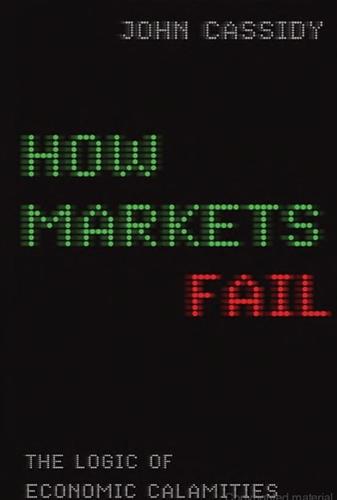
How Markets Fail: The Logic of Economic Calamities
by
John Cassidy
Published 10 Nov 2009
The birth of the modern subprime industry can be dated to the 1980 passage of the Depository Institutions Deregulation and Monetary Control Act, which allowed banks and thrifts to charge borrowers whatever rates they wanted. The Alternative Mortgage Transaction Parity Act of 1982 further loosened restrictions on lenders, allowing them to charge variable interest rates and demand balloon payments when a loan matured. And the home loan industry got another boost in the Tax Reform Act of 1986, which eliminated the tax deduction for interest on consumer and auto loans but kept the deduction on mortgage payments. Despite these pieces of legislation, during the 1980s and ’90s most firms that issued mortgages to people with poor credit histories still tended to be scrappy consumer finance companies rather than banks.
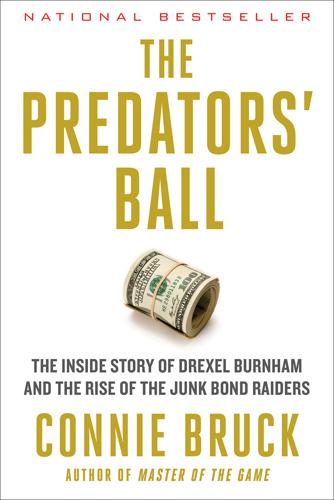
The Predators' Ball: The Inside Story of Drexel Burnham and the Rise of the JunkBond Raiders
by
Connie Bruck
Published 1 Jun 1989
Law, however, did favor legislation to abolish greenmail. And Scherer was in favor of changing the tax law that favors the issuing of debt over equity by making interest payments (on debt) deductible but dividends (on stock) not. No law to abolish greenmail was passed. While sweeping changes were made in the Tax Reform Act of 1986, that debt-favoring provision was not one of them. And the only regulatory measure affecting takeovers that was put into effect gave credence to the view that the government might as well stay out of the takeover arena, since its rules are no sooner passed than they become obsolete. In December 1985, the Federal Reserve Board had proposed a measure that would apply its margin regulations to junk bonds issued by shell companies to finance acquisitions.
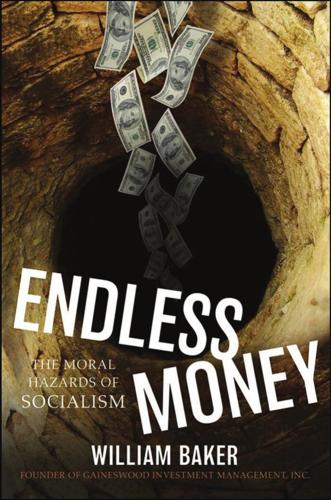
Endless Money: The Moral Hazards of Socialism
by
William Baker
and
Addison Wiggin
Published 2 Nov 2009
The financial meltdown begun in 2008 provided ammunition to politicians who have been pressing to redistribute yet more income from the rich to the less than rich. Part 3 reviews the historical record, which shows that redistribution was immoderate from World War II until Reagan’s presidency. Reagan succeeded in reducing the burden of taxation on the upper-middle class dramatically through the Tax Reform Act of 1986, whose impact was phased in by 1988. Still, from that time forward, income of the upper-middle class has been redistributed proportionately more than it was during the administration of Franklin Roosevelt, who ostensibly “soaked the rich.” The top income tax bracket in 2008 applies to earnings above $357,700.
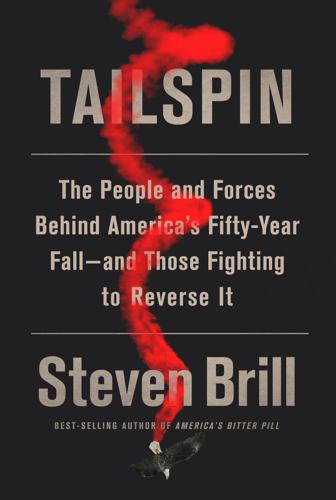
Tailspin: The People and Forces Behind America's Fifty-Year Fall--And Those Fighting to Reverse It
by
Steven Brill
Published 28 May 2018
he wrote in 1924: Andrew Mellon, Taxation: The People’s Business (New York: Macmillan, 1924), p. 57, https://archive.org/stream/taxationthepeopl033026mbp#page/n7/mode/2up. See also Ajay K. Mehrota and Julia C. Ott, “The Curious Beginnings of the Capital Gains Tax Preference,” Fordham Law Review 84, no. 6 (2016), http://ir.lawnet.fordham.edu/cgi/viewcontent.cgi?article=5205&context=flr. A bipartisan tax reform law: The Tax Reform Act of 1986: https://www.congress.gov/bill/99th-congress/house-bill/3838?r=1. For the best description of the law and the process that produced it, see Jeffrey Birnbaum and Alan Murray, Showdown at Gucci Gulch: Lawmakers, Lobbyists, and the Unlikely Triumph of Tax Reform (New York: Random House, 1987).

Good Economics for Hard Times: Better Answers to Our Biggest Problems
by
Abhijit V. Banerjee
and
Esther Duflo
Published 12 Nov 2019
There are small ups and downs, and Sweden actually has a significant upswing starting somewhere in the 1980s, but the levels remain very low by US standards.31 These data are about pre-tax income, before the rich paid taxes and the poor received transfers. Therefore, they do not take into account any attempt to redistribute from the rich to the poor. Since taxes went down in the United States, we might have expected post-tax inequality to increase even more than pre-tax inequality after 1979. One does see a small blip up at the time of the Tax Reform Act of 1986, but for the most part the curves for pre-tax and post-tax income shares track each other.32 Taxes are important for redistribution, but the increase in inequality is a much deeper phenomenon than a mechanical effect of lower redistribution. At the same time, around 1980, wages stopped increasing, at least for the least educated.
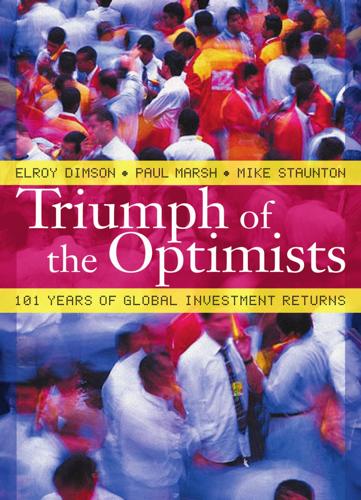
Triumph of the Optimists: 101 Years of Global Investment Returns
by
Elroy Dimson
,
Paul Marsh
and
Mike Staunton
Published 3 Feb 2002
Consistent with this view, Figure 11-9, taken from Grullon and Michaely (2000), confirms that share repurchases surged in the United States from the mid-1980s. This change is often attributed to tax. Because capital gains are taxed in the United States at a lower rate than dividends, corporations have an incentive to substitute repurchases for dividends. But this incentive existed long before the mid-1980s, and the US Tax Reform Act of 1986 considerably reduced (although by no means eliminated) the relative advantage of capital gains, so tax cannot be the only explanation (for a fuller discussion, see Grullon and Ikenberry, 2000). Whatever the explanation, Figure 11-9 shows that repurchases increased from less than 5 percent of earnings in 1980 to 50 percent in 1998.

The Survival of the City: Human Flourishing in an Age of Isolation
by
Edward Glaeser
and
David Cutler
Published 14 Sep 2021
As inflation has eroded that tax’s real value, Washington has used general tax revenues to fund roads, which effectively subsidizes driving and energy use. The home mortgage interest deduction was originally part of the tax code because all interest that households paid was deductible. The Tax Reform Act of 1986 eliminated the more general interest deduction, but the favoritism shown to homeowners remained. After World War II, the federal government expanded its support for home buying with Veterans Administration loans for returning soldiers. Between 1940 and 1960, the homeownership rate increased from 44 to 62 percent.

The Making of Global Capitalism
by
Leo Panitch
and
Sam Gindin
Published 8 Oct 2012
Long before this argument found its place in the World Bank’s 1997 Report (discussed in the previous chapter), it had already been marginalized inside the Clinton administration.96 The balance of class forces this marginalization reflected was already registered in the defeat US labor had suffered over NAFTA at the hands of the Clinton administration, while the defeat of healthcare reform “foundered on the shoals of internal party divisions, before Republicans and mobilized conservative forces delivered the coup de grace.”97 Clinton’s subsequent initiatives to balance the budget by “ending welfare as we know it” were accompanied by the disappointment of union hopes for labor law reforms that would help undo the loss of union rights and decline in union membership; union density, which had fallen by 4 percent in the 1980s, fell by another 2 percent in the 1990s.98 While real annual income growth averaged 4 percent during what became known as “the Clinton expansion” from 1993 to 2000, the top 1 percent captured more than the bottom 80 percent of the total increase in personal income.99 The Clinton administration especially sought to integrate working-class black and Hispanic communities into mainstream housing markets as part of its goal of fostering wider access to financial services. These policies gave a significant boost to the mortgage market and to home-ownership rates, but they also installed an infrastructure for the dramatic growth of household debt. This built directly on the full implementation by 1991 of Reagan’s Tax Reform Act of 1986, which, apart from its dramatic reduction of the top marginal tax rate, removed the tax break on consumer interest payments with the crucial exception of mortgages.100 The immediate impact was that consumers could borrow on their mortgages at effectively cheaper rates because of the tax break, and use the cash received to pay off their debts on a regular basis, allowing them to keep buying on credit even if their income was stagnating.

Den of Thieves
by
James B. Stewart
Published 14 Oct 1991
Integrated had loyally issued junk bonds, invested in them, and become one of Milken's biggest captive clients. Integrated had attracted millions of dollars, the savings of unwitting investors, in its financial products. Its stock price had soared from $7 in 1981 to $46 in 1983. Even though the tax reform act of 1986 had curbed its profits on sales of tax shelters, Milken debt had propelled it into new lines of business. Top executives and major owners— members of the Zises family—had paid themselves huge salaries. But with its underlying business eroding, Integrated was a house of cards, a microcosm of the whole junk-bond empire.
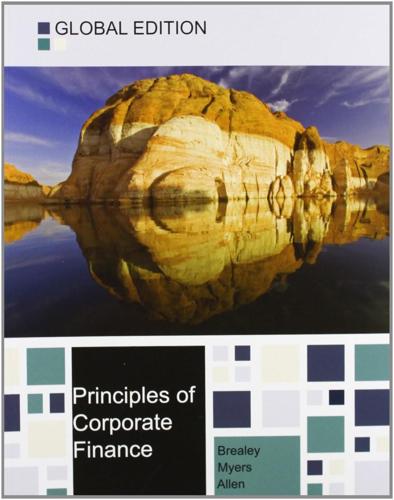
Principles of Corporate Finance
by
Richard A. Brealey
,
Stewart C. Myers
and
Franklin Allen
Published 15 Feb 2014
Now if IM&C could just get those tax shields sooner, they would be worth more, right? Fortunately tax law allows corporations to do just that: It allows accelerated depreciation. BEYOND THE PAGE ● ● ● ● ● MACRS classes brealey.mhhe.com/c06 The current rules for tax depreciation in the United States were set by the Tax Reform Act of 1986, which established a Modified Accelerated Cost Recovery System (MACRS). Table 6.4 summarizes the tax depreciation schedules. Note that there are six schedules, one for each recovery period class. Most industrial equipment falls into the five- and seven-year classes. To keep things simple, we assume that all the guano project’s investment goes into five-year assets.
…
investment decisions and, 140–142 leveraged buyouts (LBOs) and, 839 in merger analysis, 822–823 in Germany, 143–144, 415 imputation tax system, 414, 415–416, 416n, 467n on individuals, leverage and, 452–454 in net present value analysis, 133 on partnerships, 355 on REITs, 355 weighted-average cost of capital, 225 Tax-exempt municipal notes, 794, 795 Tax preferences, 140–142 Tax Reform Act of 1986, 140–142 Tax shields depreciation, 140–142, 641, 644n, 648, 651 interest, 450–454 lease, 641 nature of, 449–452 value of interest, 500–501 Taylor, A. M., 714 Taylor, M. P., 714 Technological change equivalent annual cash flow and, 147 exploiting new technology, 281–288 TED spread, 625, 888 Tehranian, H., 388n, 388–389 Teixeira, Mark, 301 Temporary abandonment, 569–570 10-K, 304, 720 10-Q, 720 Tender offer, 824 Tenneco, 848 Term loans, 624 Terms of sale, 781–782 Term structure of interest rates, 53–59 in bond valuation, 53–59 defined, 53 expectations theory of, 57–59 explaining, 57–59 inflation in, 59 law of one price, 54–55 measuring, 55–56 risk in, 58–59 Tesla Motors, 387 Tetley Tea, 827 Tetlow, R.
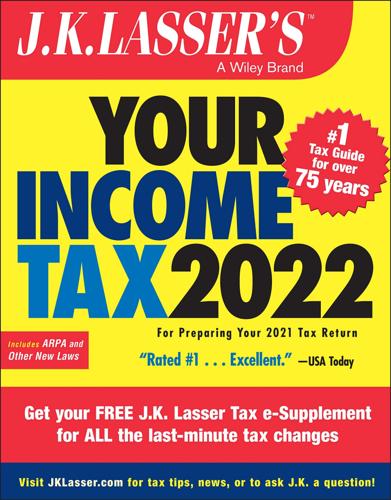
J.K. Lasser's Your Income Tax 2022: For Preparing Your 2021 Tax Return
by
J. K. Lasser Institute
Published 21 Dec 2021
Proc. 2019-19, 2019-36 IRB 674 Companies may not limit exemployees' investments Rev. Rul. 96-47, 1996-2 CB 35 State's ability to tax pension income limited P.L. 104-95 (1/10/96) Waiver of pension benefits taxable Alfred Gallade, 106 TC 20 (1996) 7.2 LUMP-SUM DISTRIBUTIONS Sections 1122(h)(3) and (5) of the Tax Reform Act of 1986 (P.L. 99-514) *IRS Publication 575 Qualified plans IRC §401 Employer must withhold 20% tax on lump sum IRC §3405(c) Computation of averaging Reg. §1.402(e)-2(d) Five-year participation test for 10-year averaging Reg. §1.402(e)-2(e)(3) Averaging barred by post-2001 rollover to same plan Section 641(f)(3) of EGTRRA 2001 7.3 LUMP-SUM OPTIONS IF YOU WERE BORN BEFORE JANUARY 2, 1936 Employer must withhold 20% tax on lump sum IRC §3405(c) Irrevocability of rollover election Temp.
…
Rul. 2005-30, 2005-20 IRB 1015 11.18 HOW LIFE INSURANCE PROCEEDS ARE TAXED TO A BENEFICIARY IRC §101 IRC §7702 Reg. §1.101-1 to §1.101-4 Flexible premium policies issued before 1985 IRC §101(f) Life insurance contract defined: policy issued after 1984 IRC §7702 Spouse's exclusion for interest: deaths before 12/23/86 IRC §101(d)(1)(B), prior to amendment by Tax Reform Act of 1986 Reg. §1.101-4(a) Taxable interest on installment payments IRC §101(c) Reg. §1.101-3 No exclusion for combined insurance-annuity pre-1986 Tax Act Rev. Rul. 65-57, 1965-1 CB 56 Remarriage does not affect interest exclusion pre-1986 Tax Act Rev. Rul. 72-164, 1972-1 CB 28 Estate tax on life insurance IRC §2042 Reg. §20.2042-1(c) Policy transferred within three years of death included in taxable estate IRC §2035 * Letter Ruling 9533001 Modified endowment contracts IRC §7702A IRC §72(e)(10) IRC §72(v) (premature withdrawal penalty) 11.19 A POLICY WITH A FAMILY INCOME RIDER Reg. §1.101-4(h) 11.20 SELLING OR SURRENDERING LIFE INSURANCE POLICY Tax results of selling or surrendering policy Rev.